
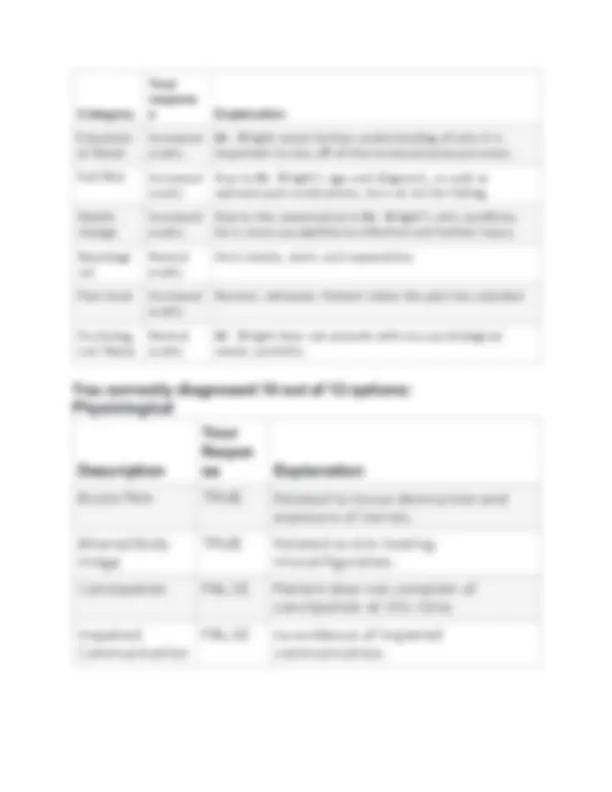
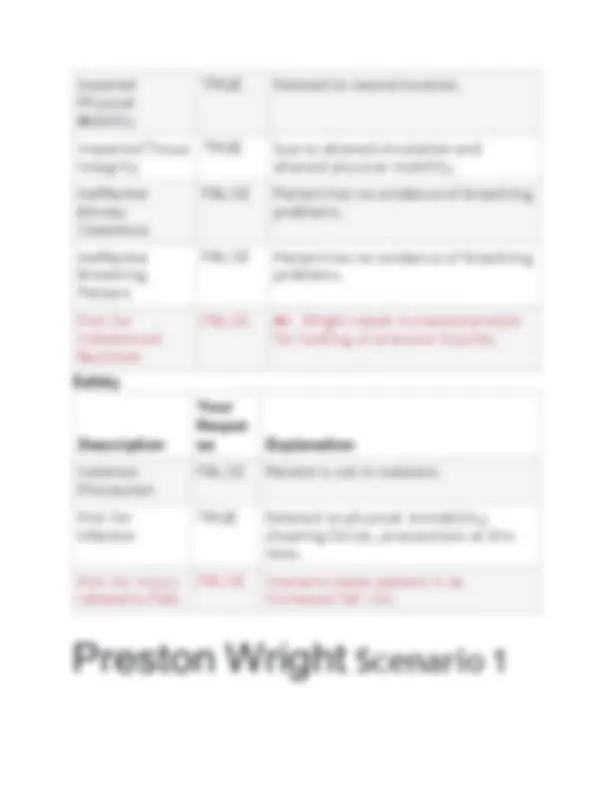
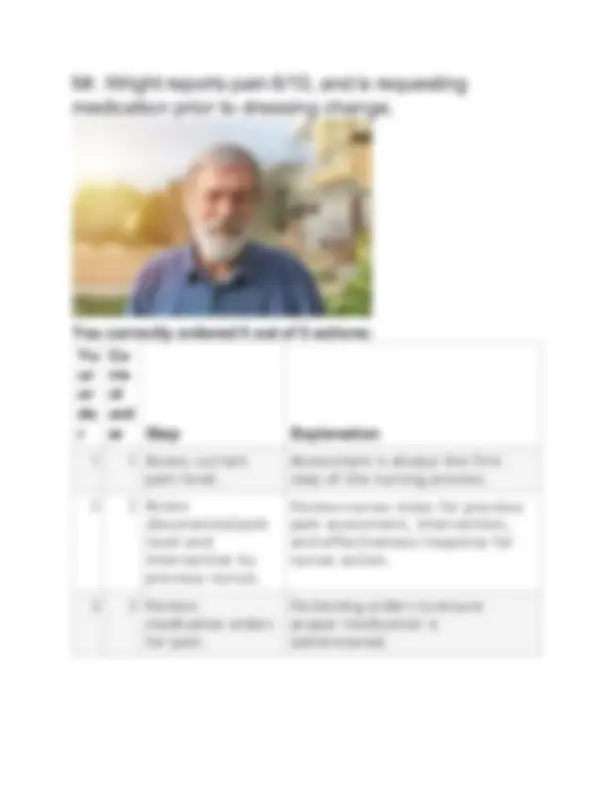
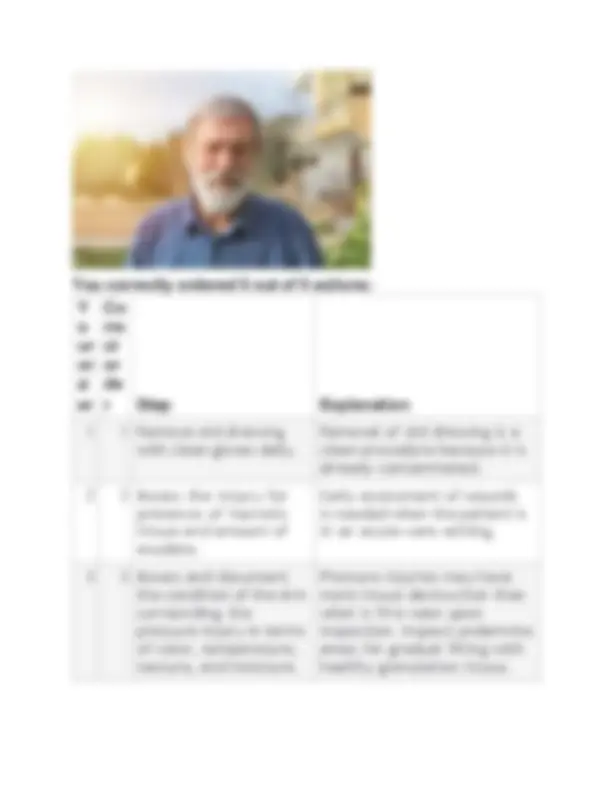
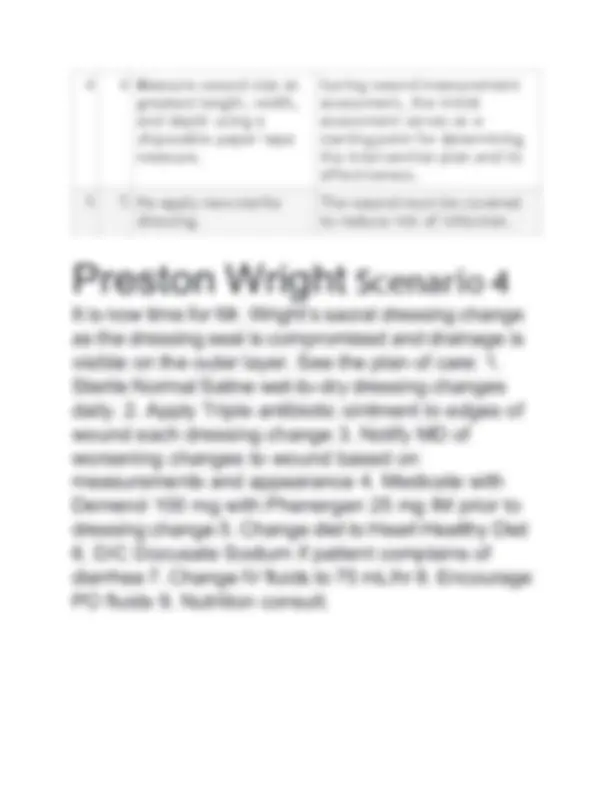
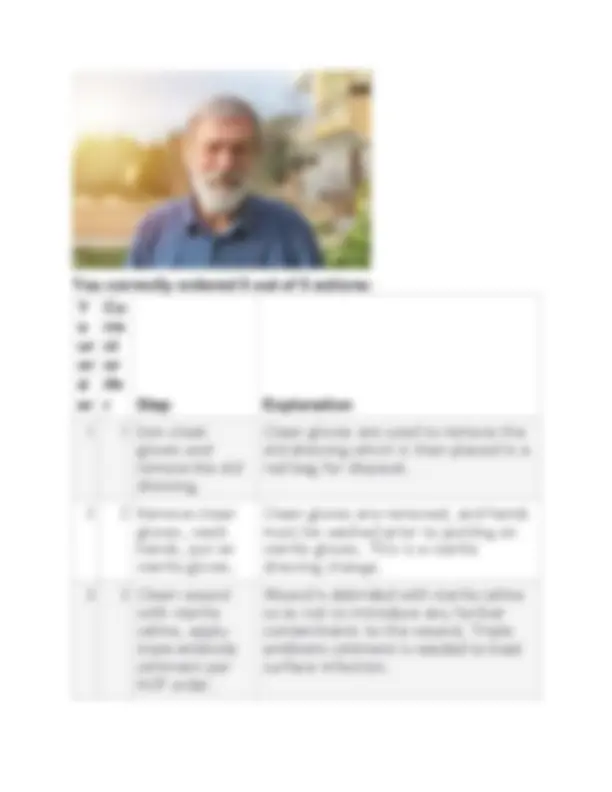
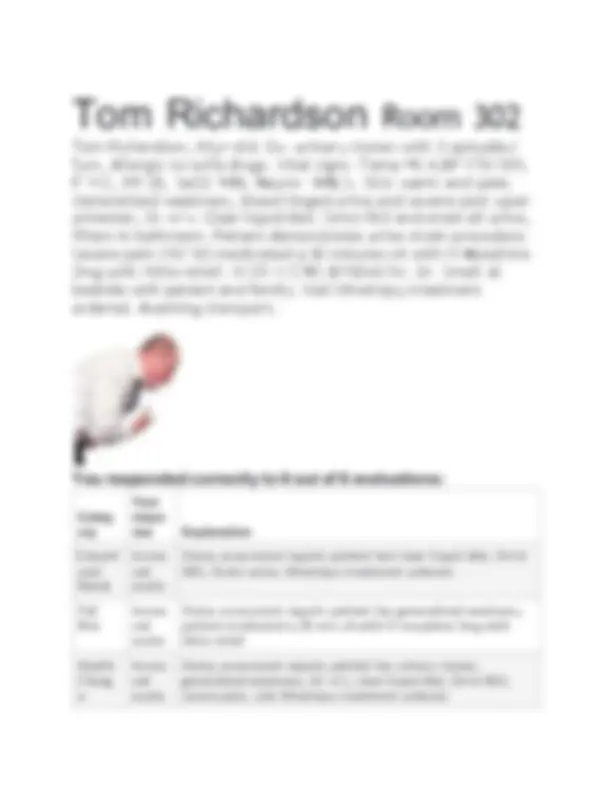
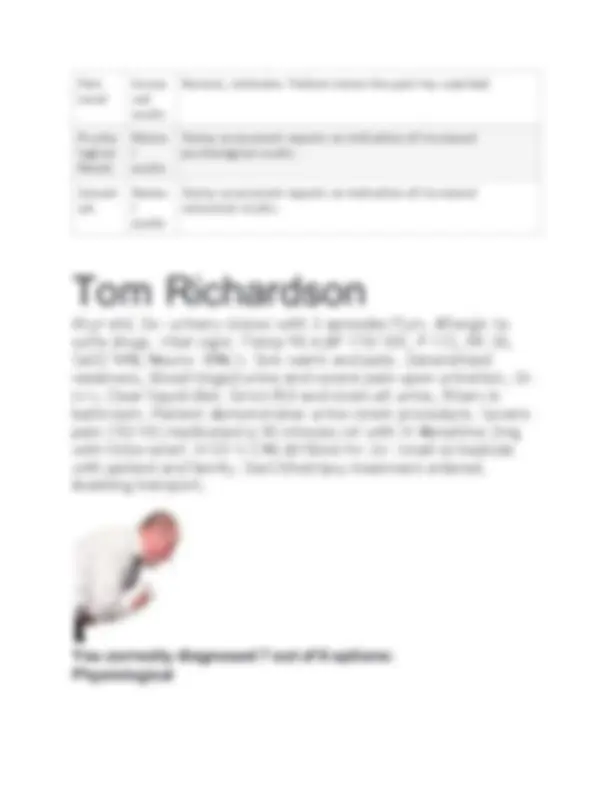
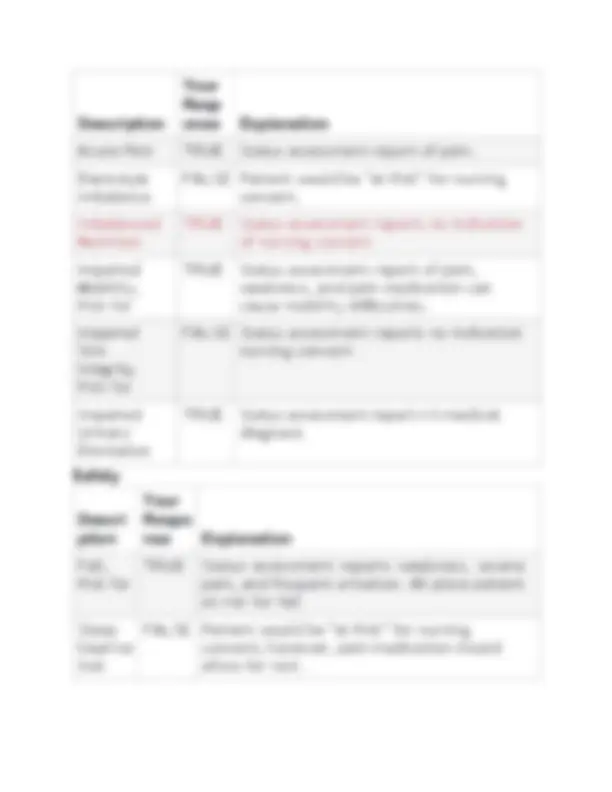
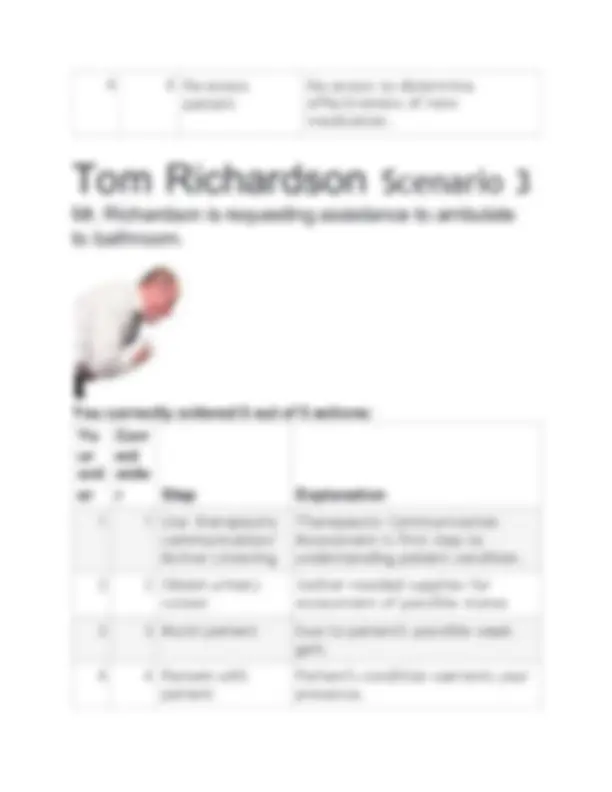
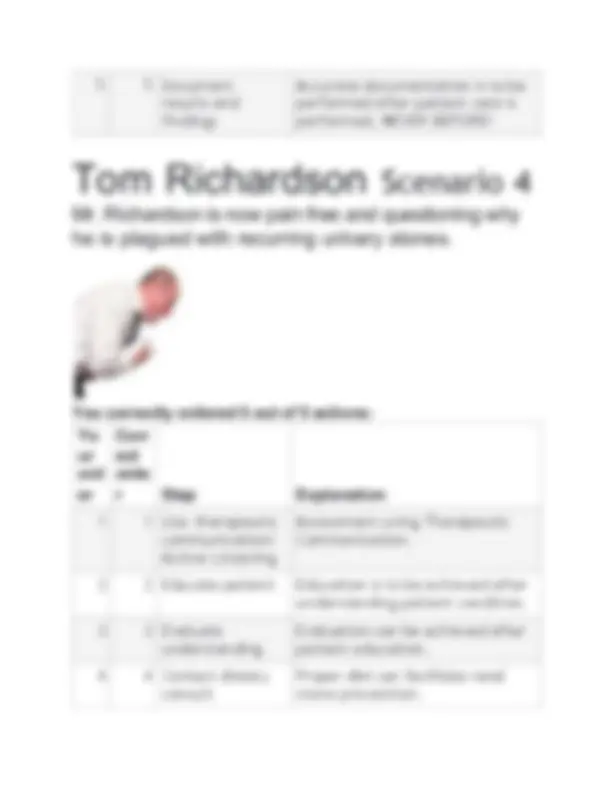
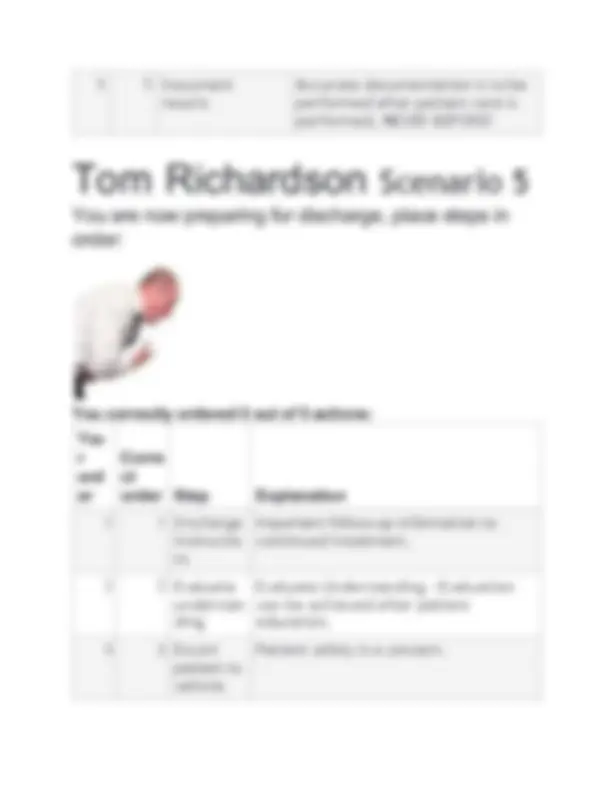
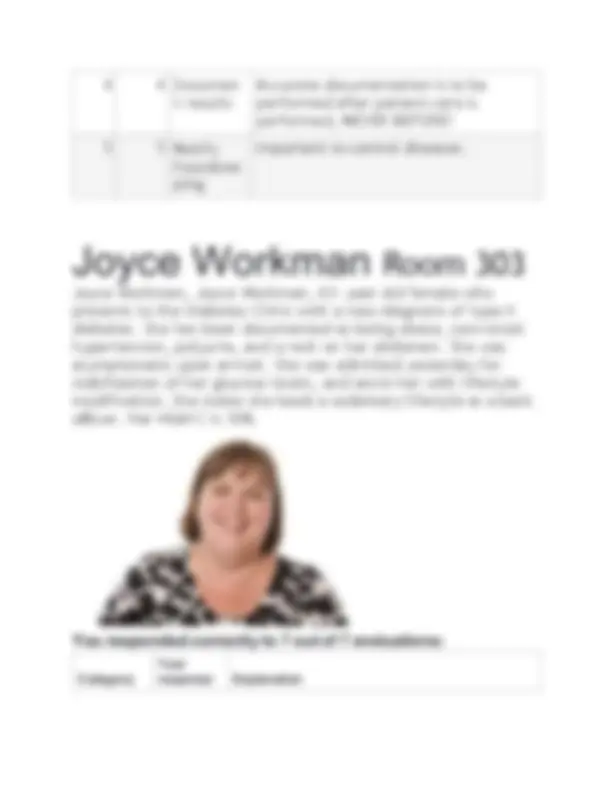
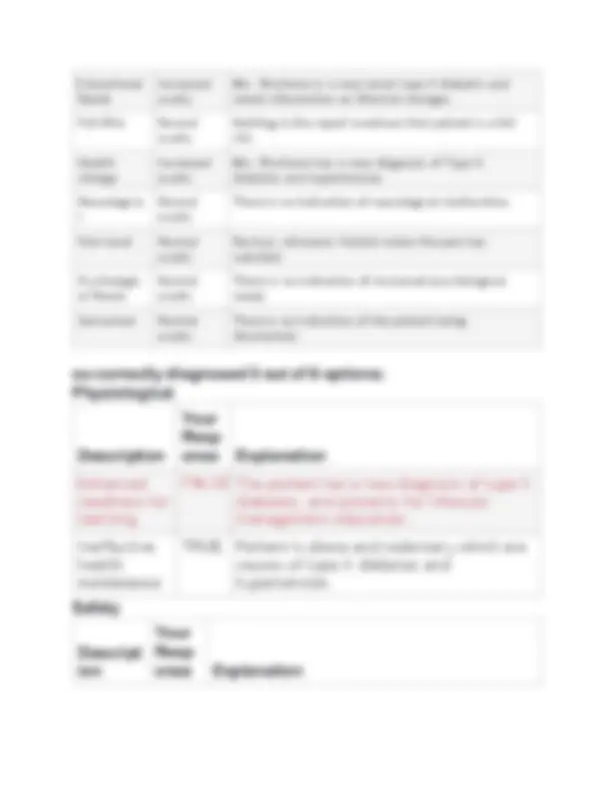
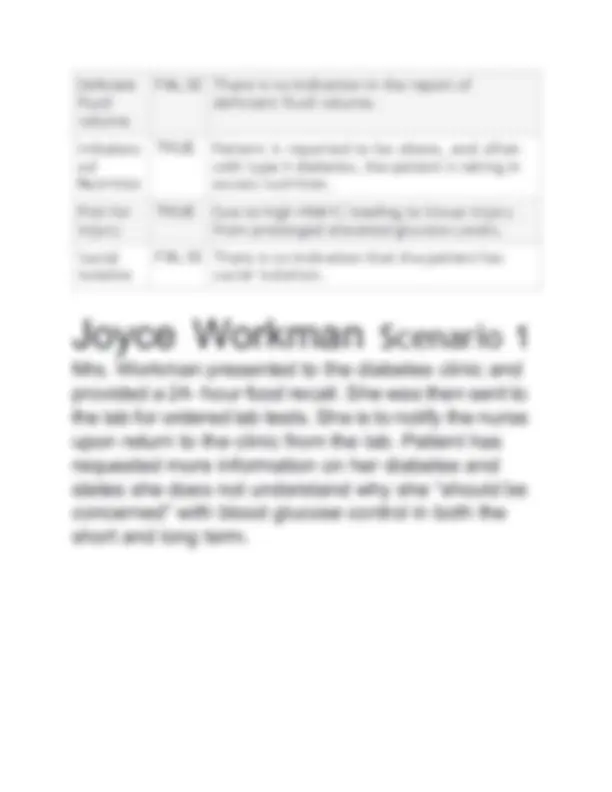
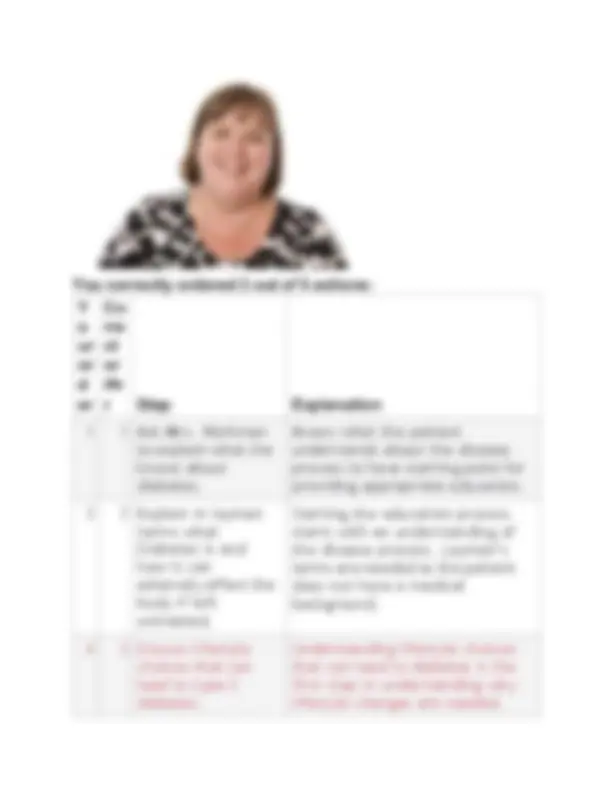
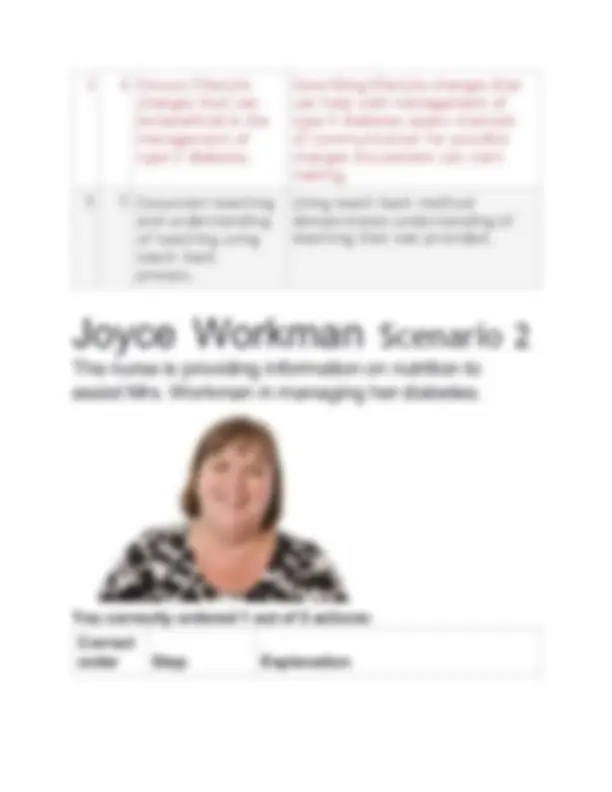

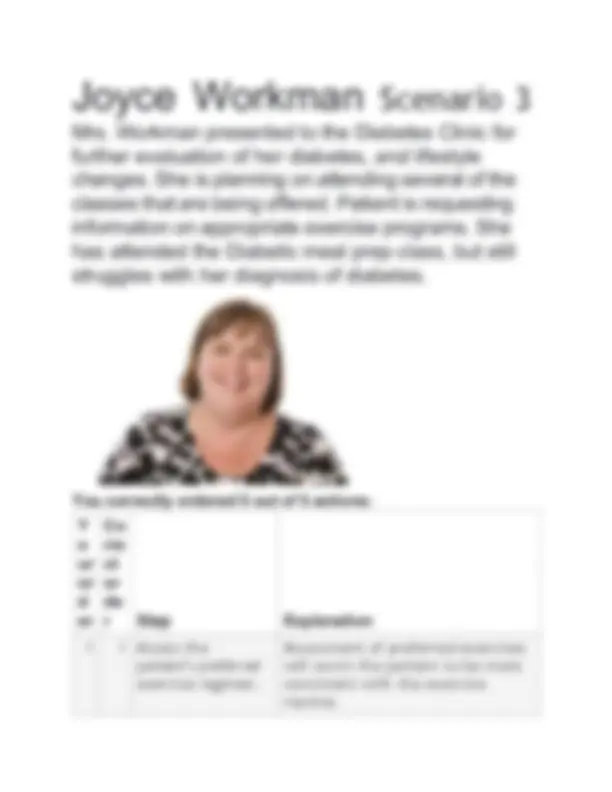
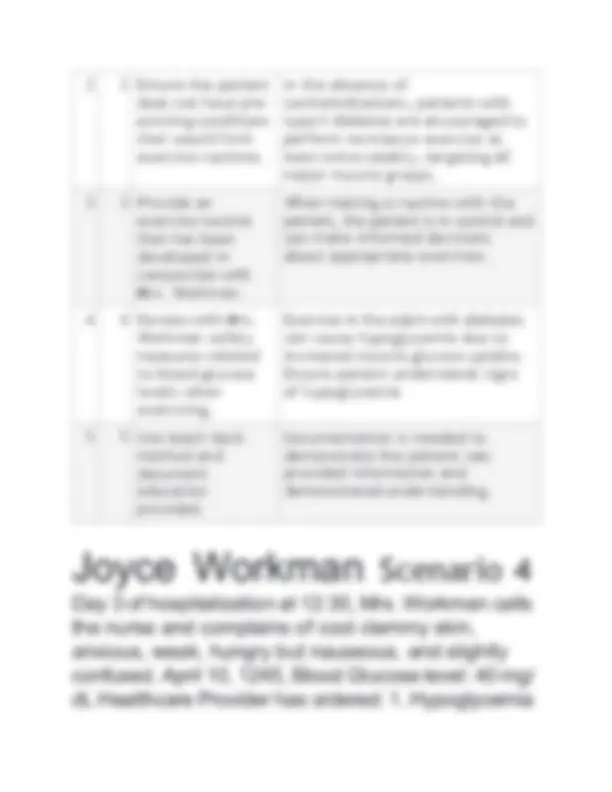
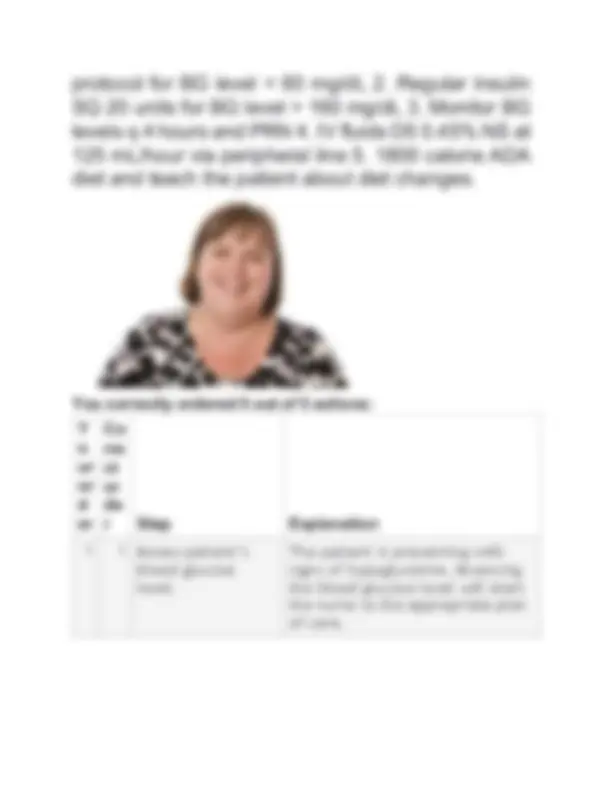
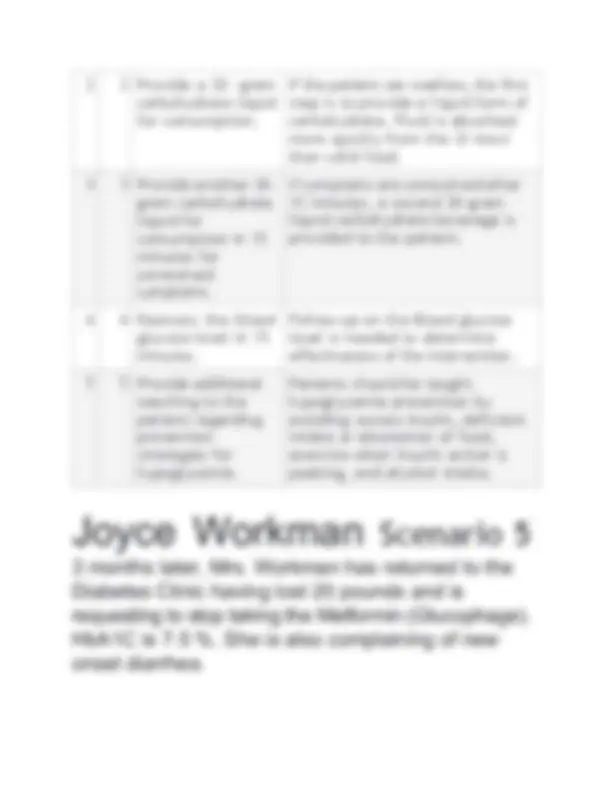
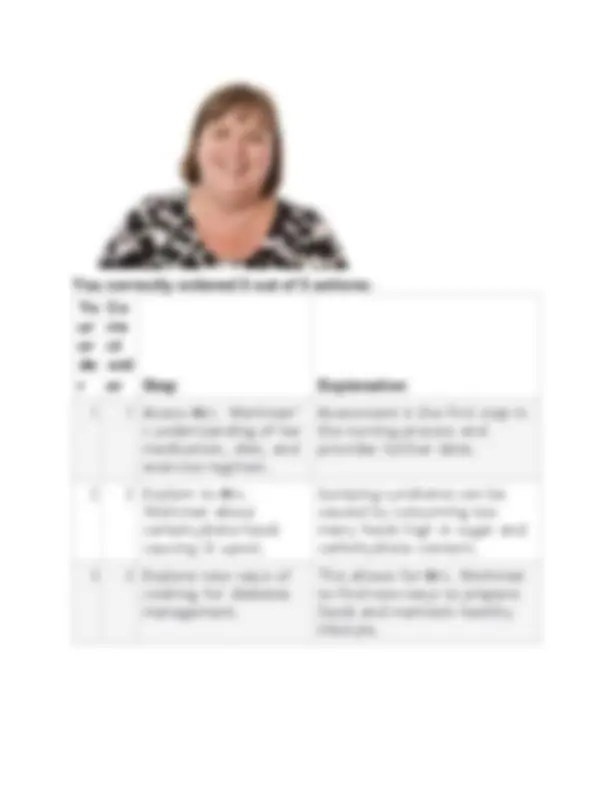
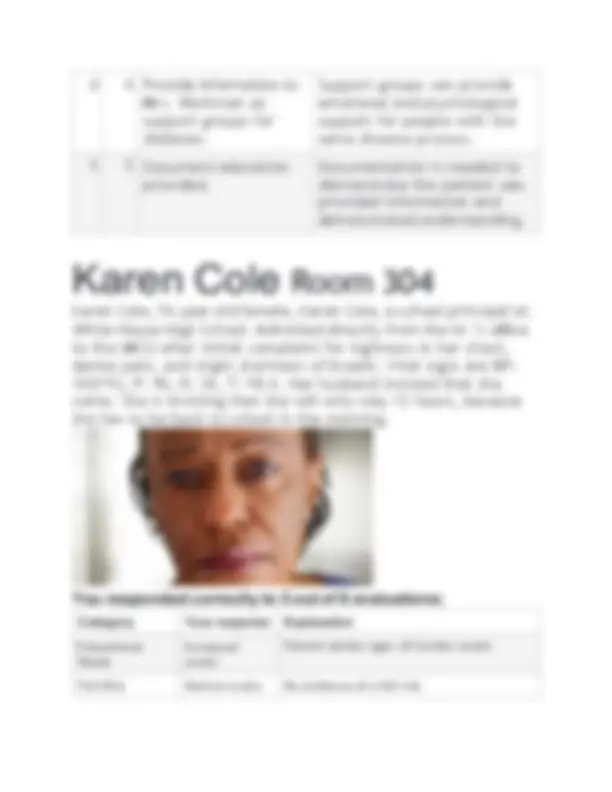
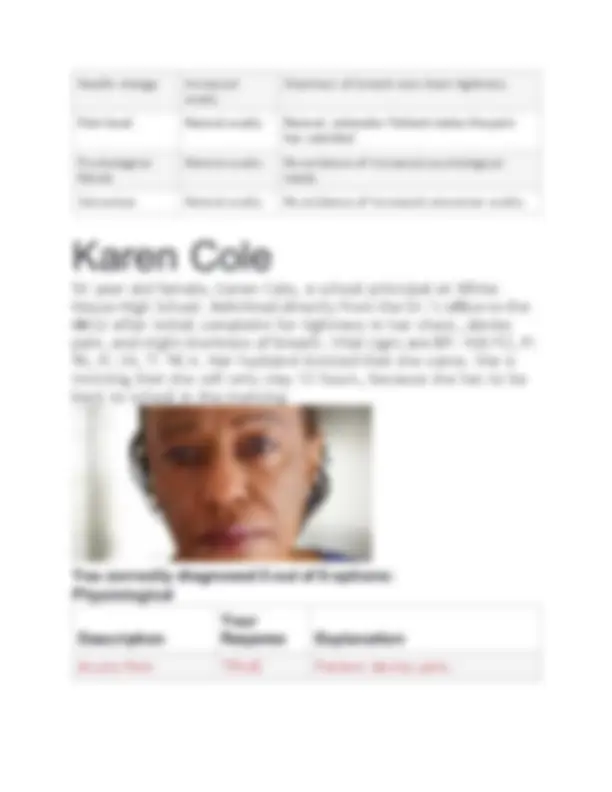
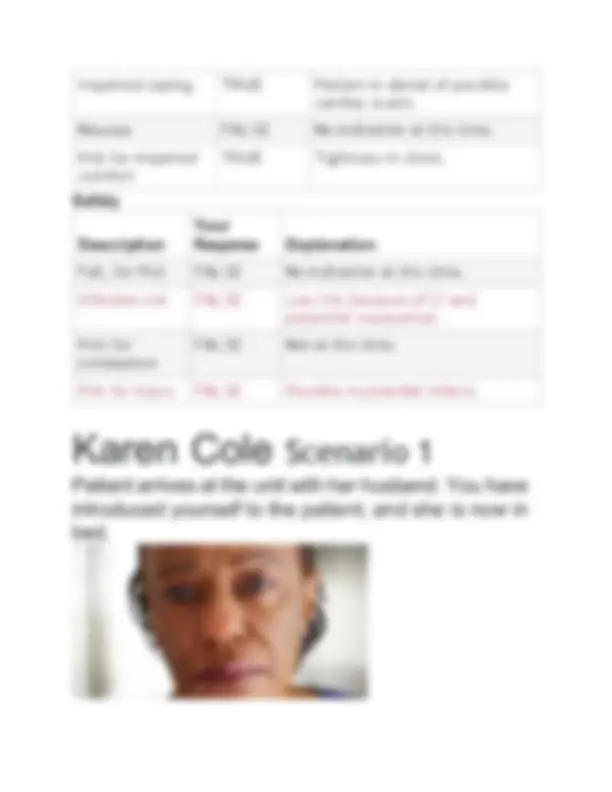

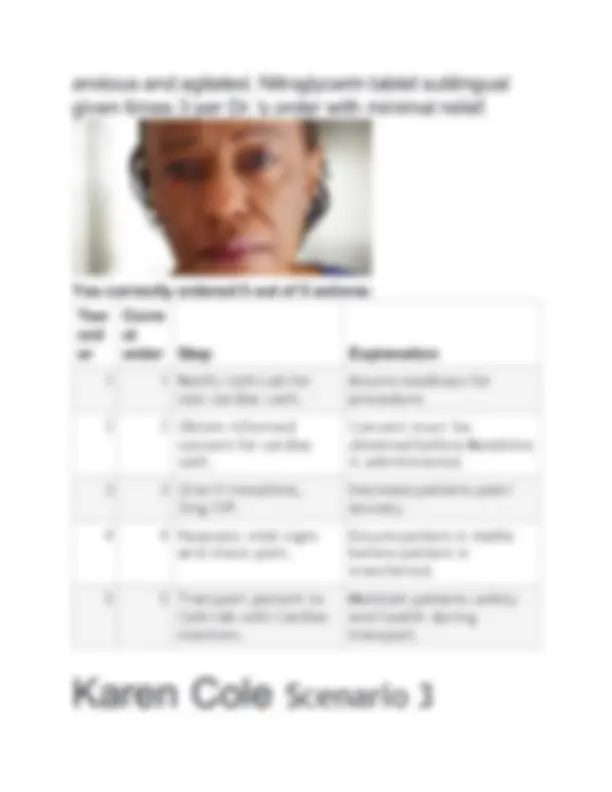
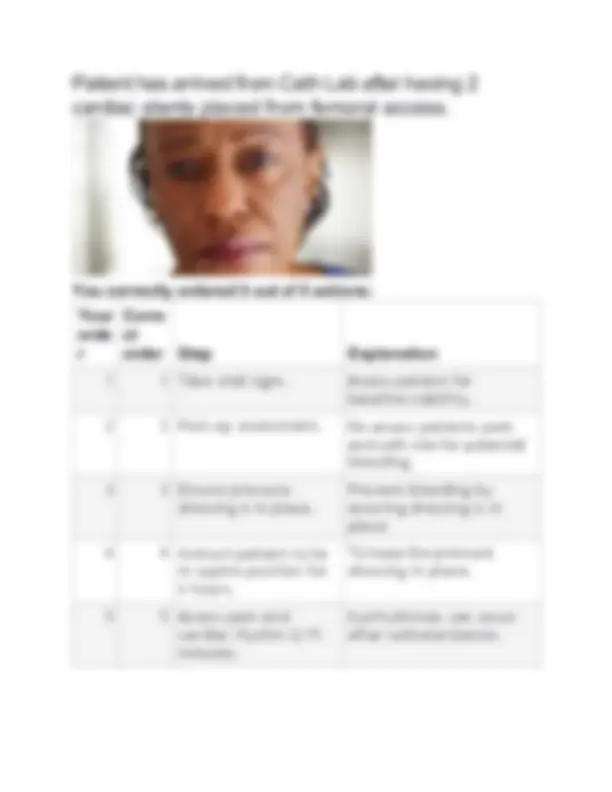
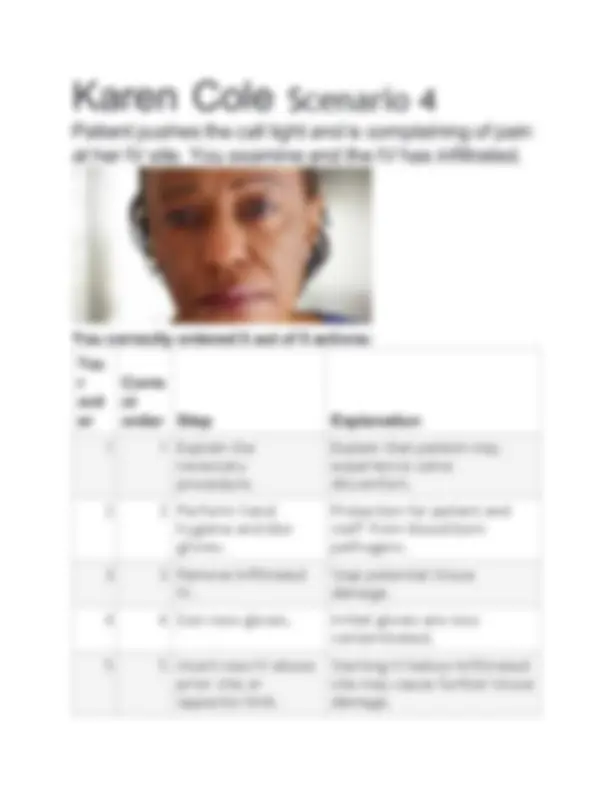
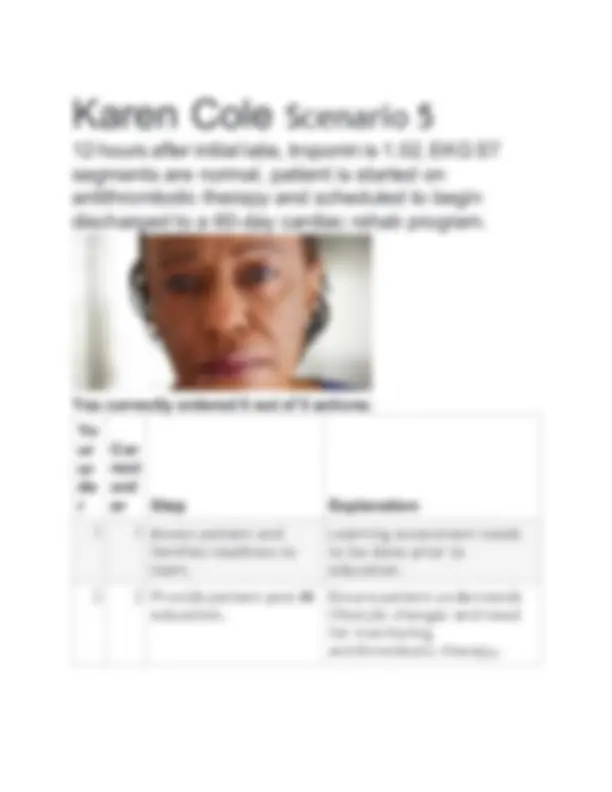
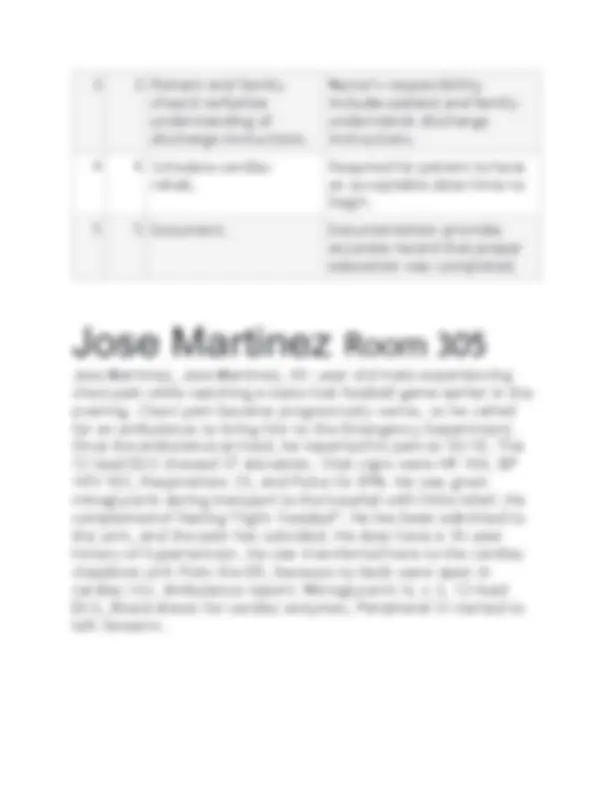
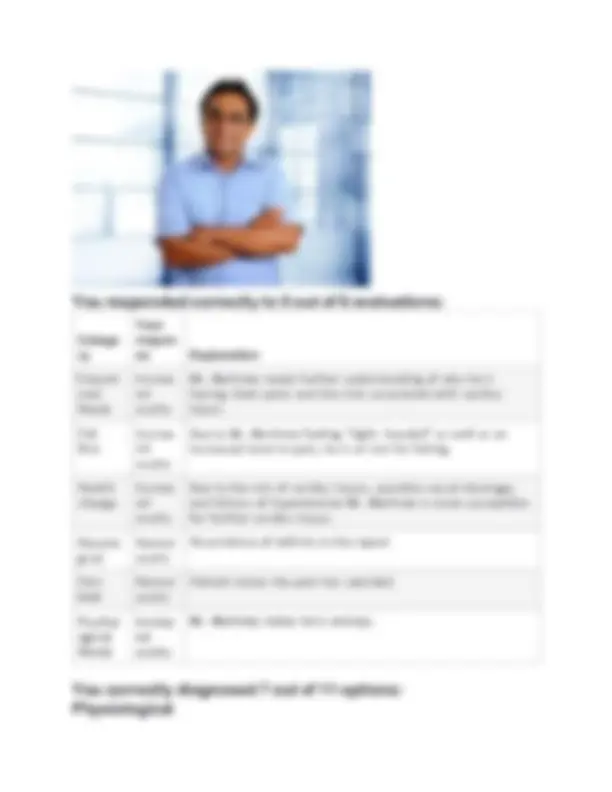
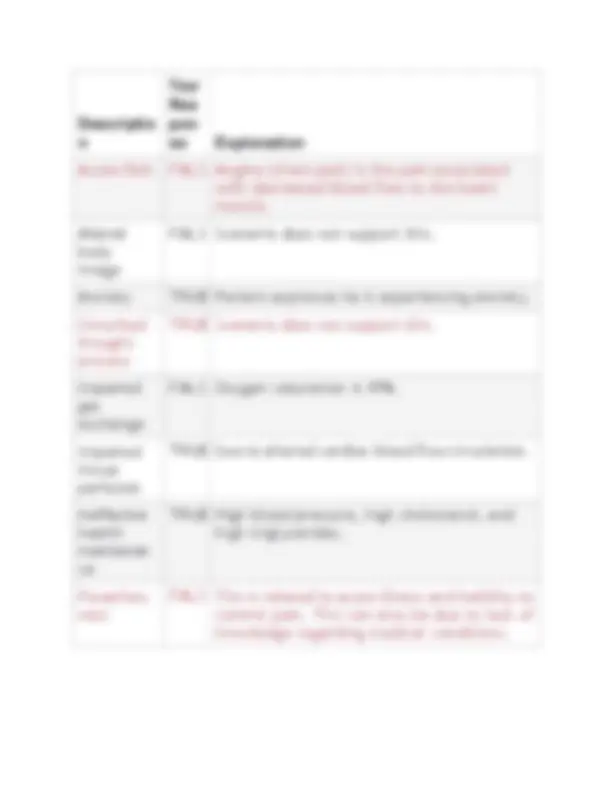
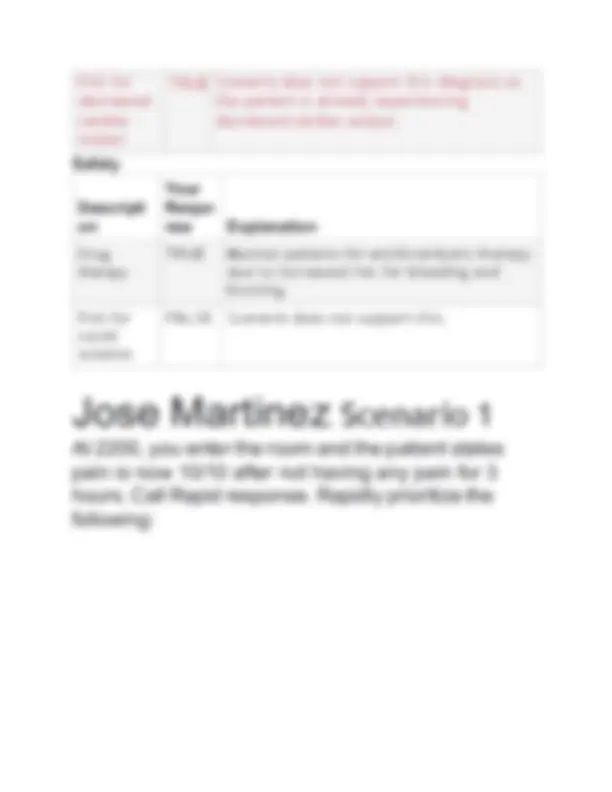
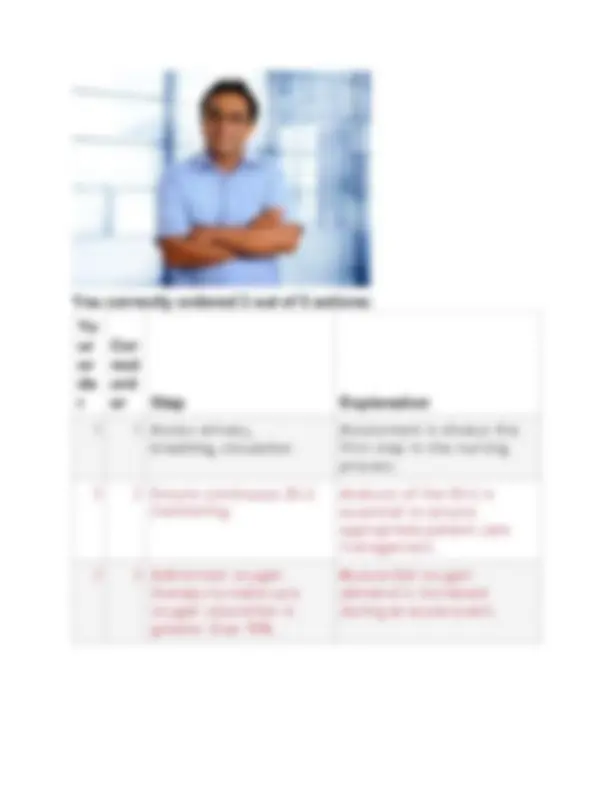
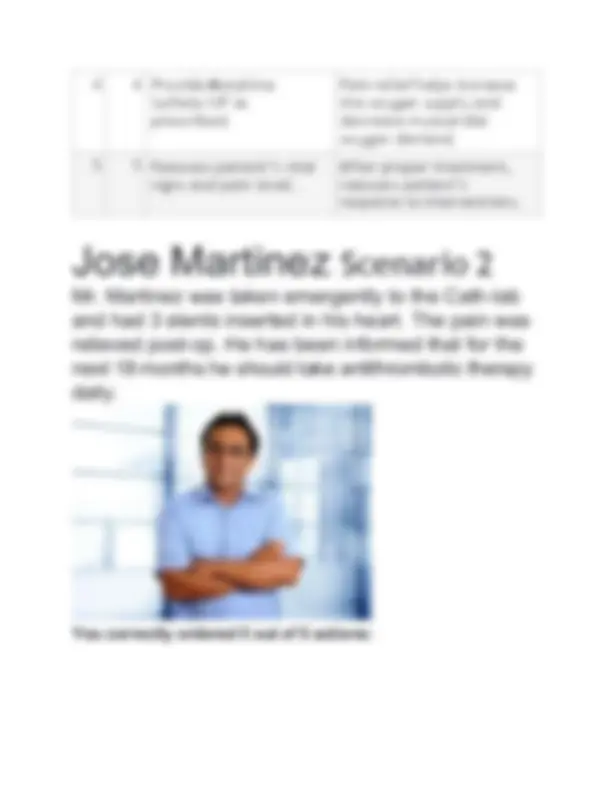
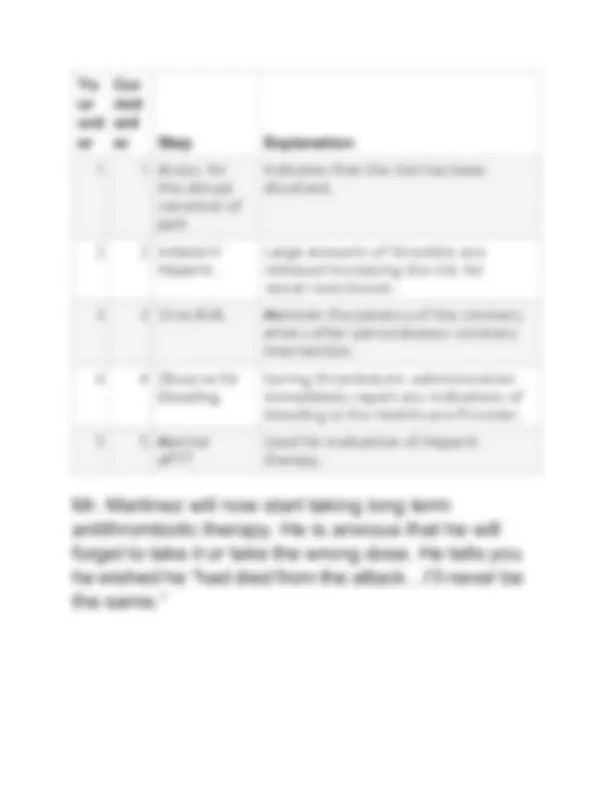
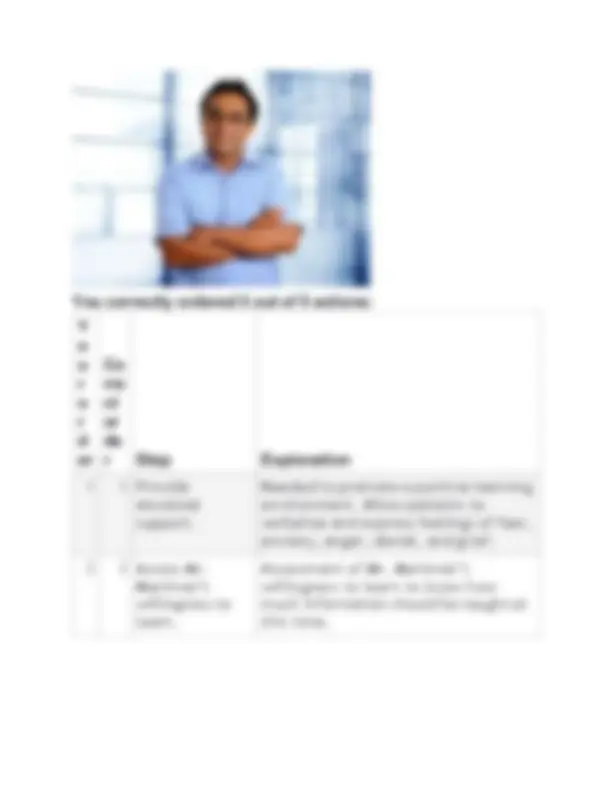
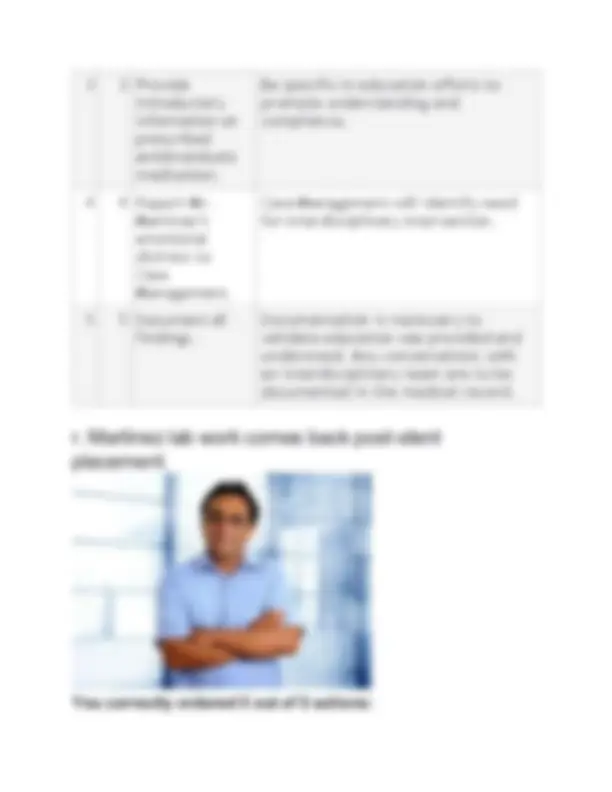
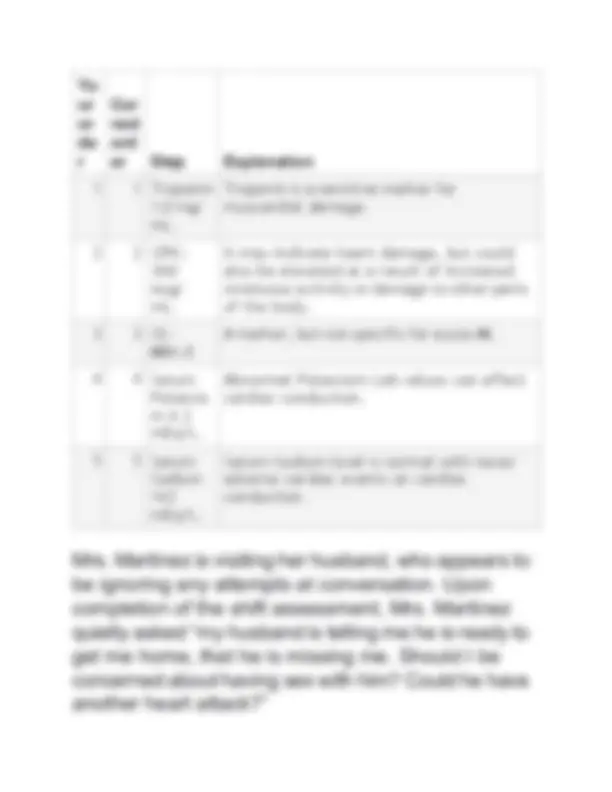
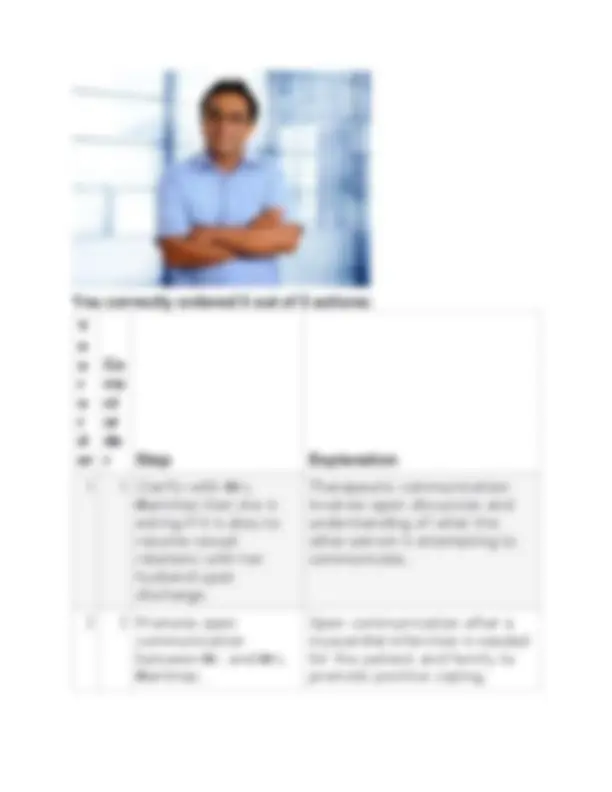
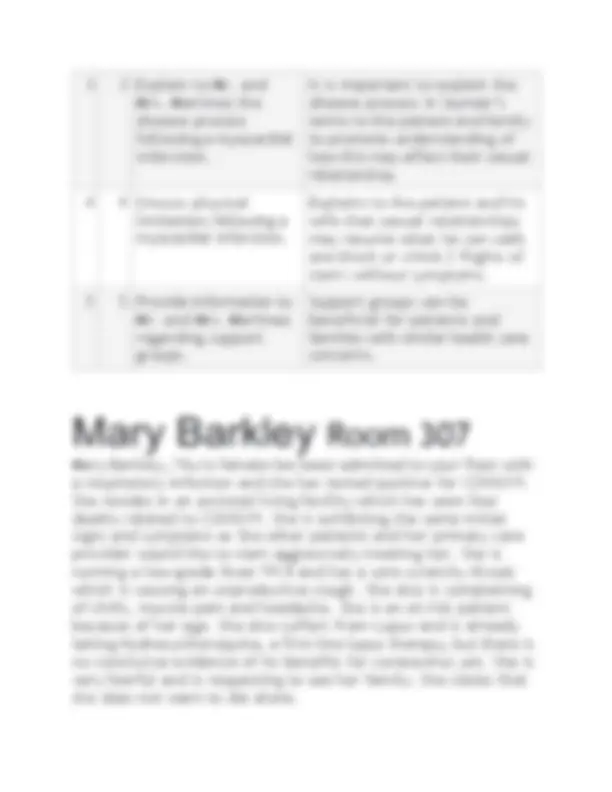
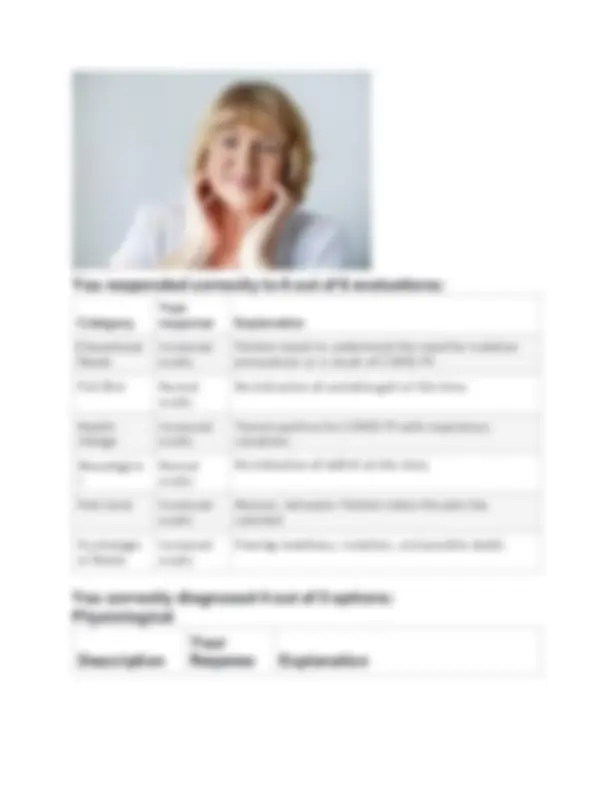
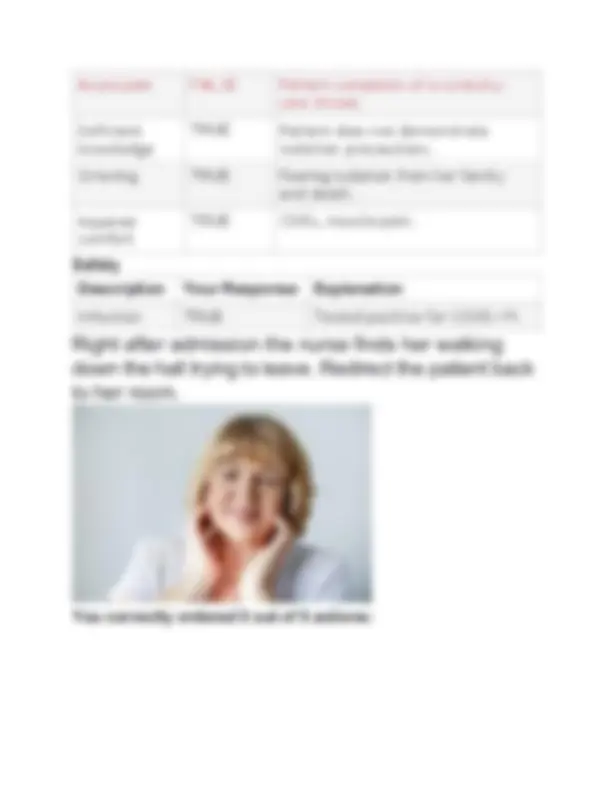
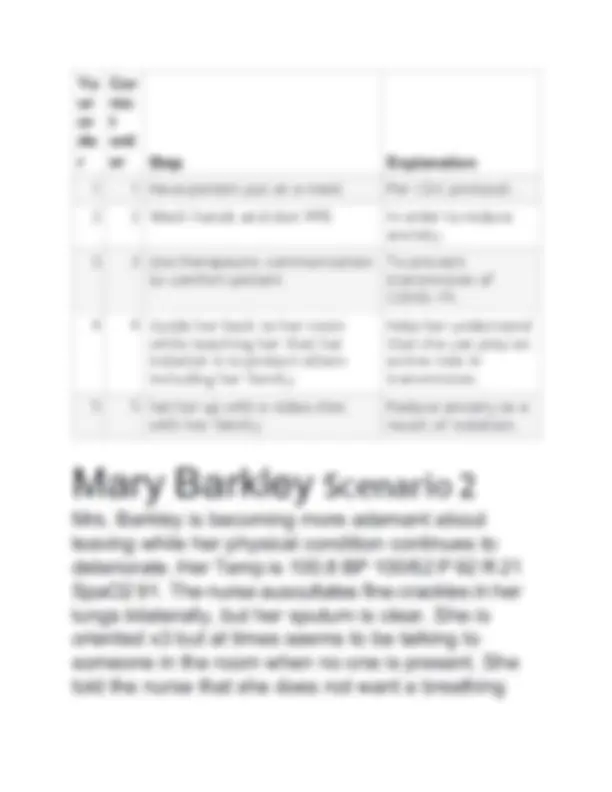
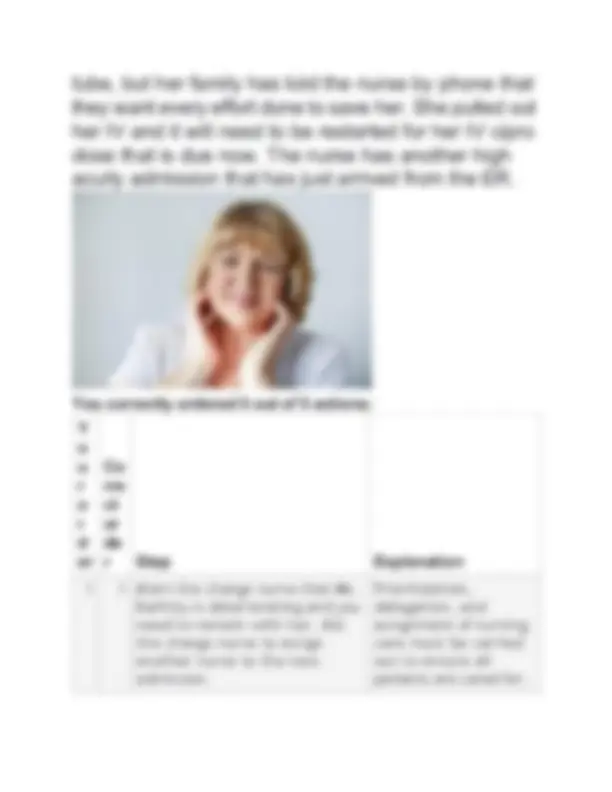
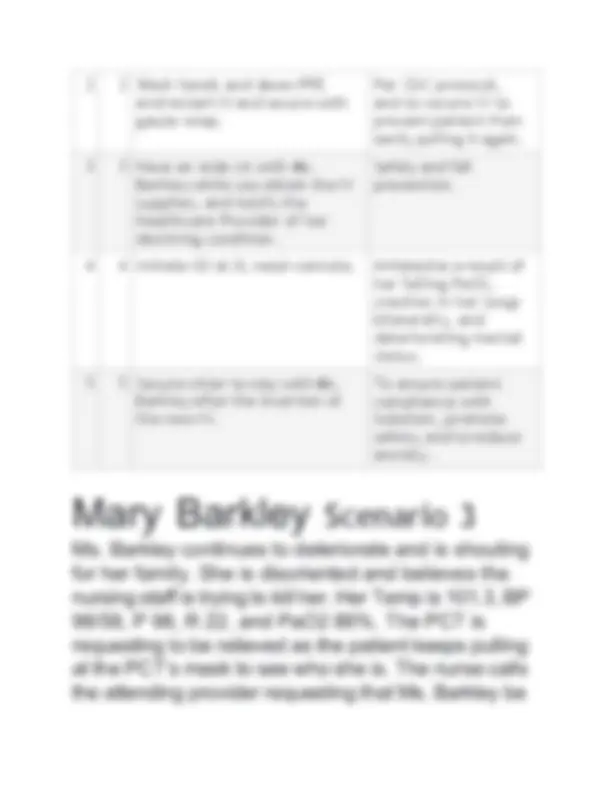
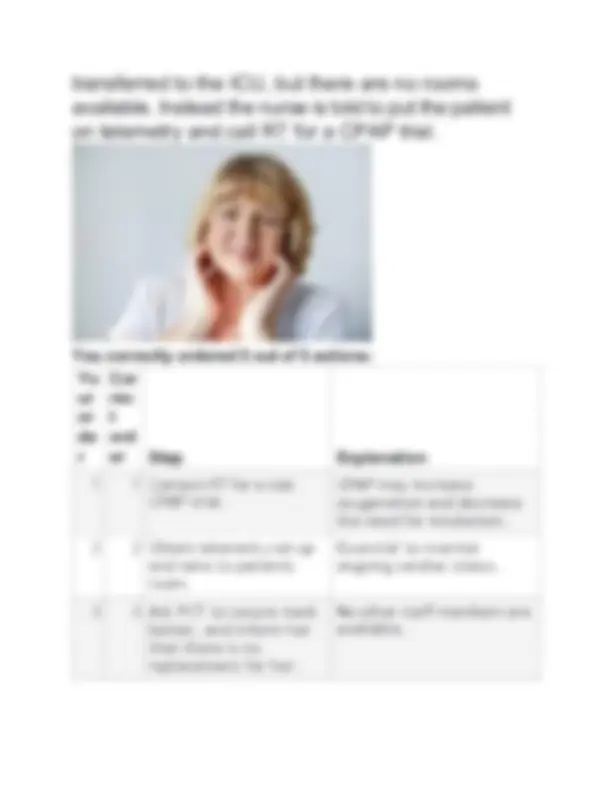
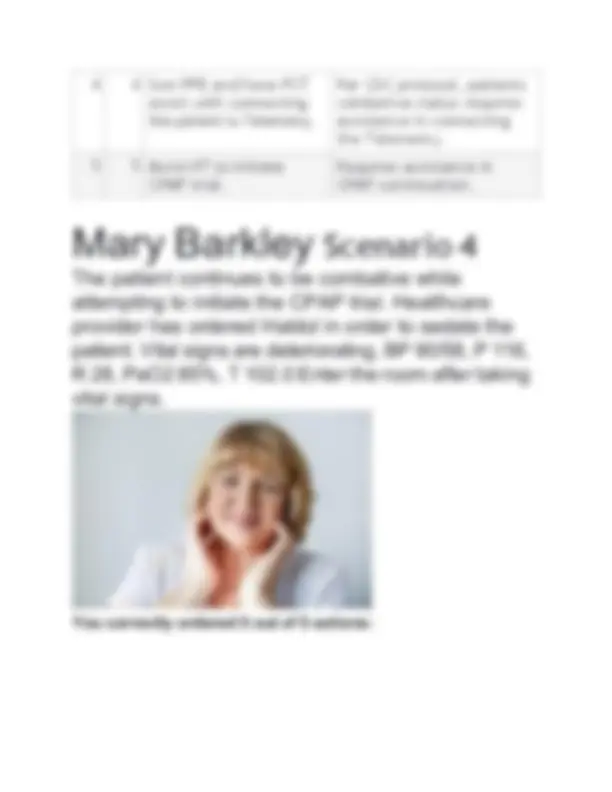
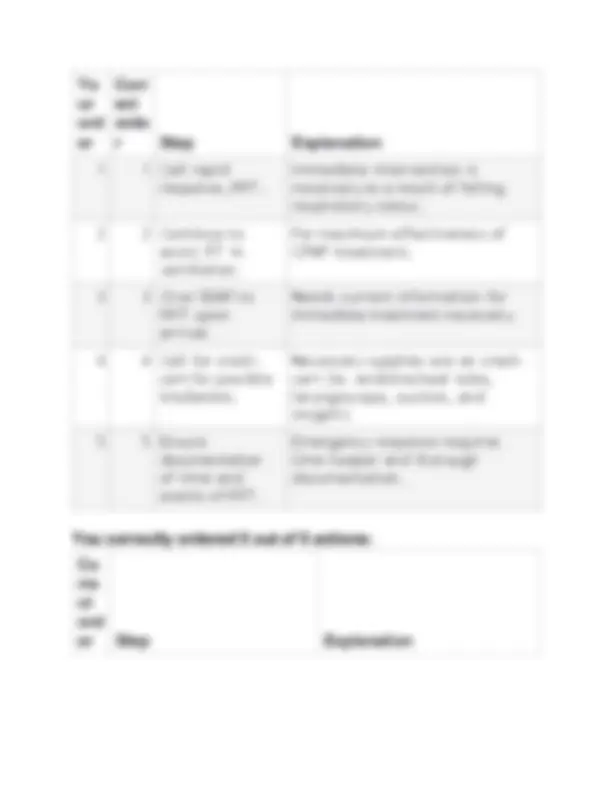
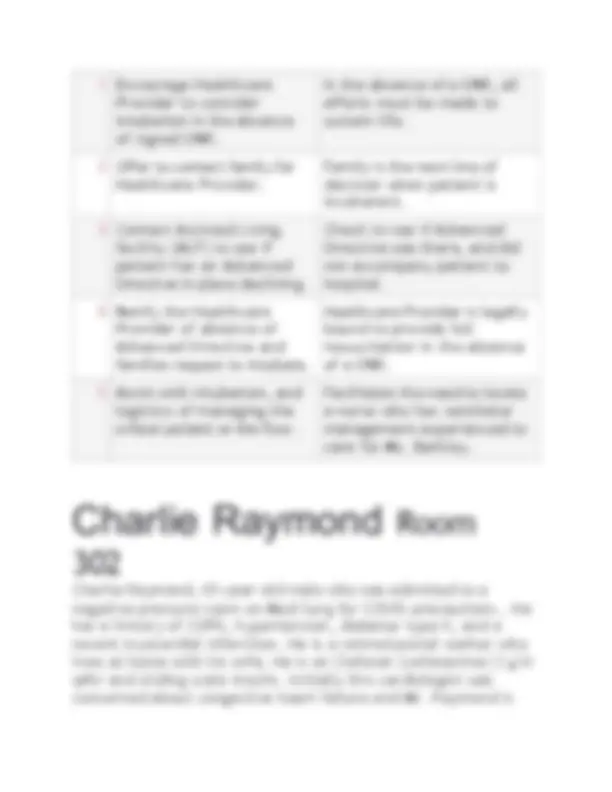
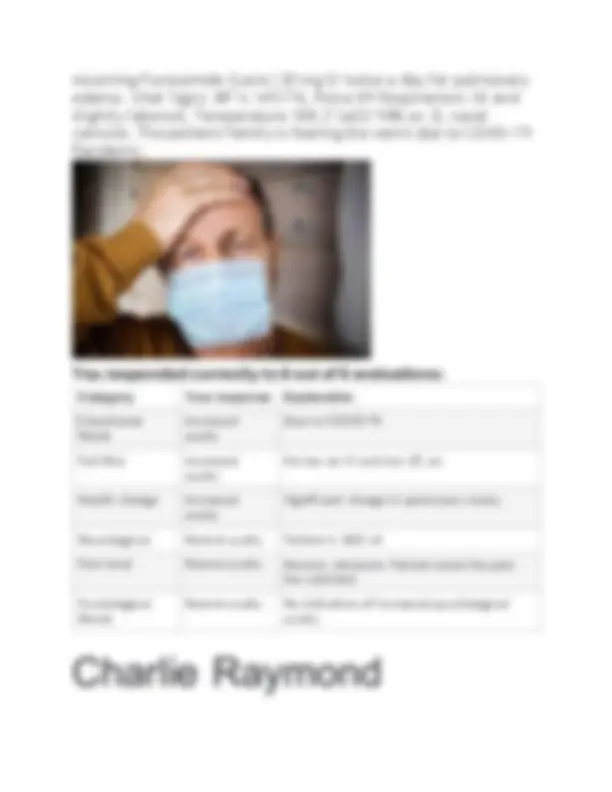
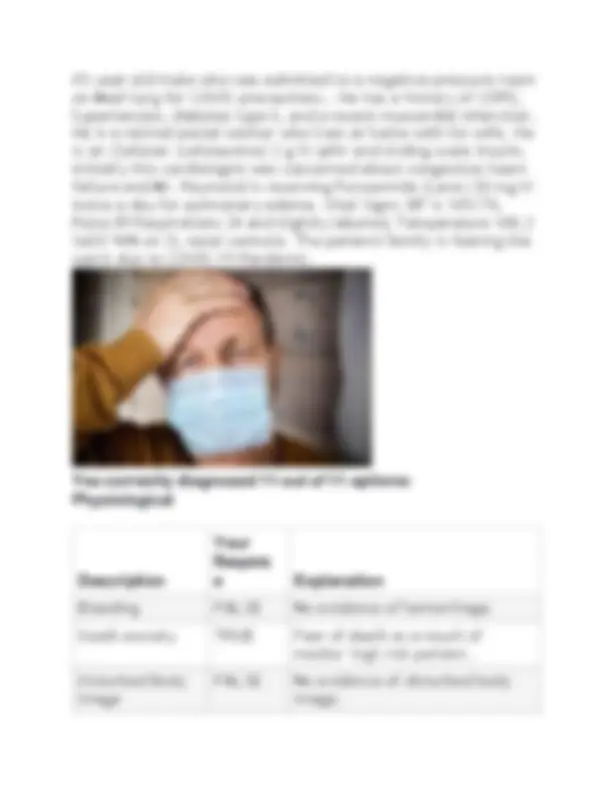
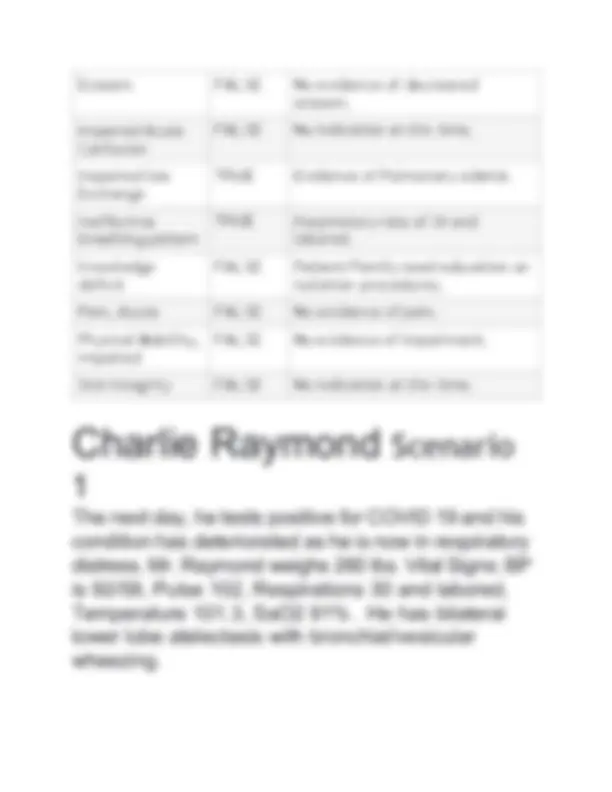
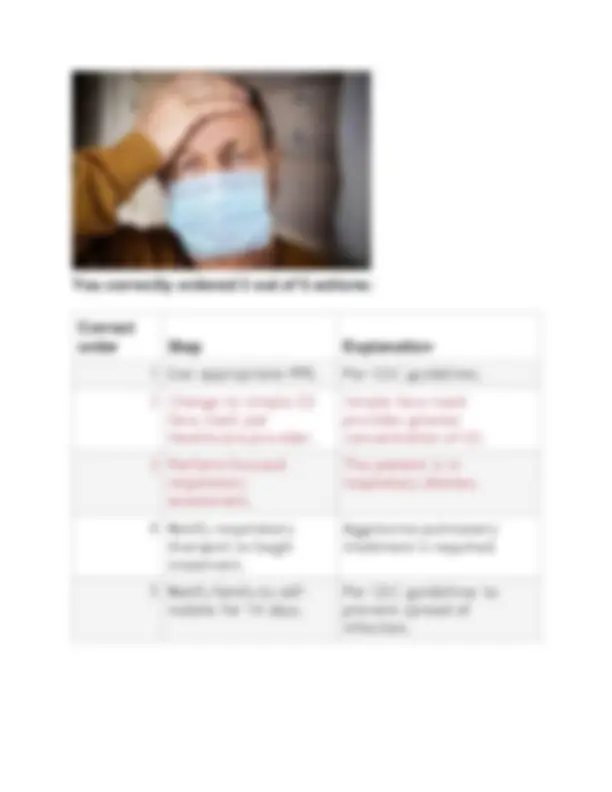
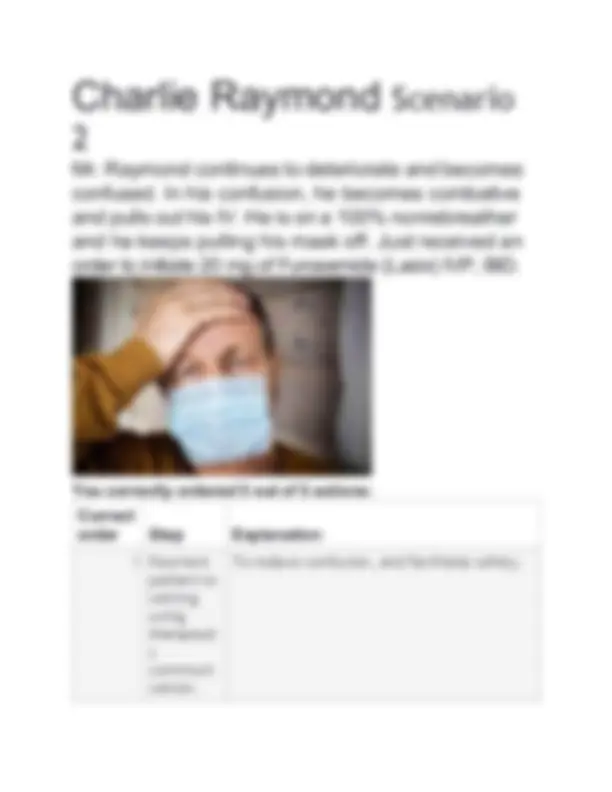
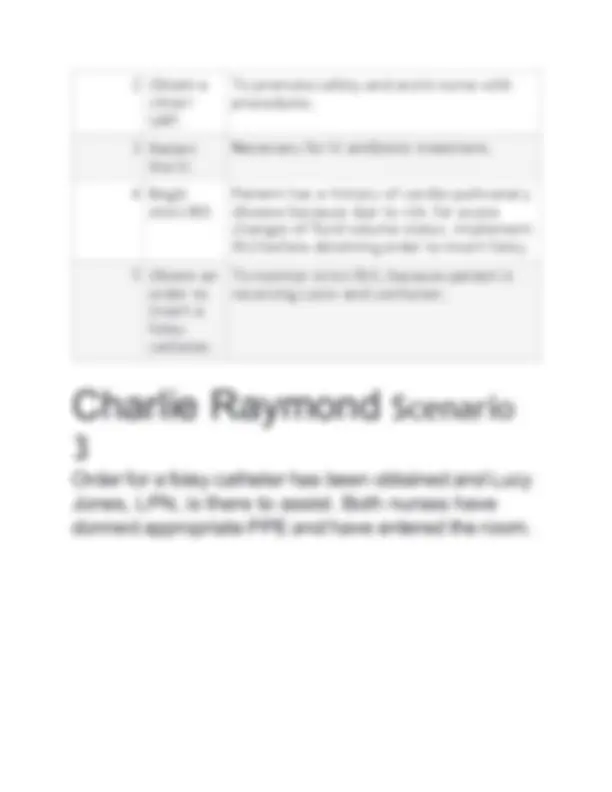
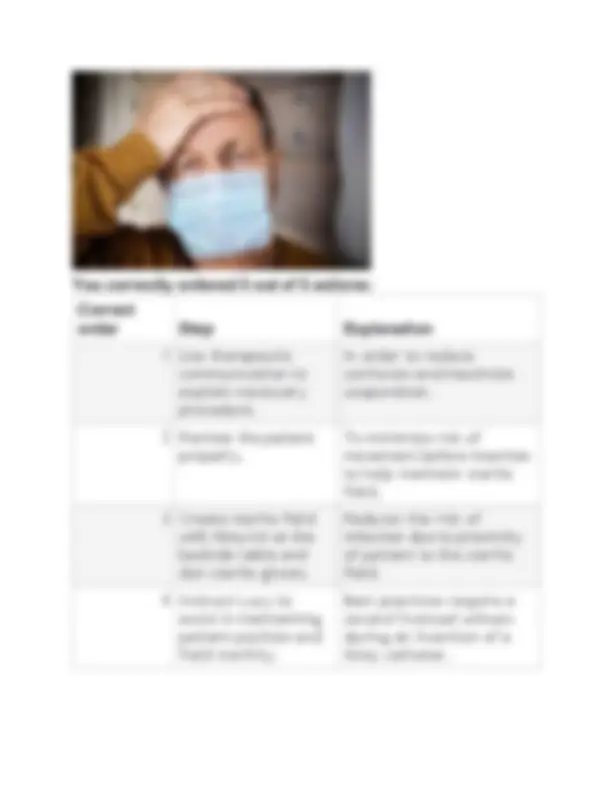
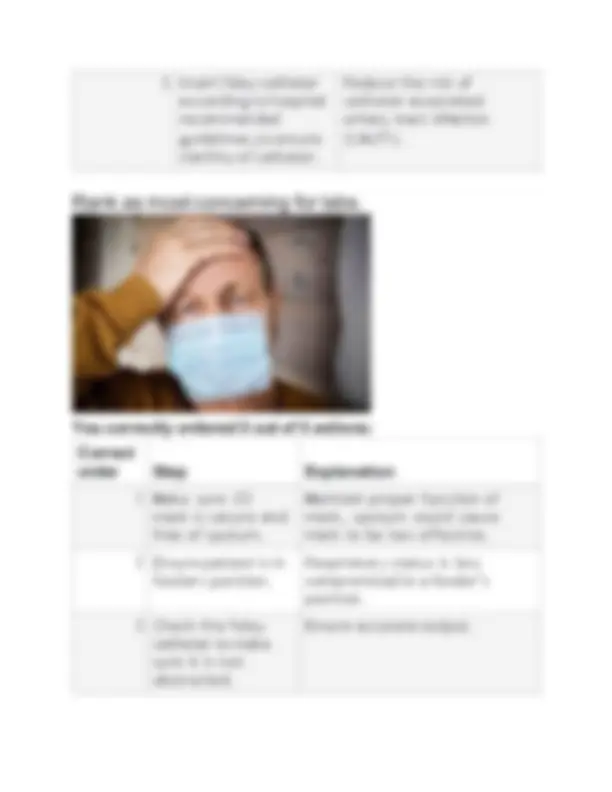
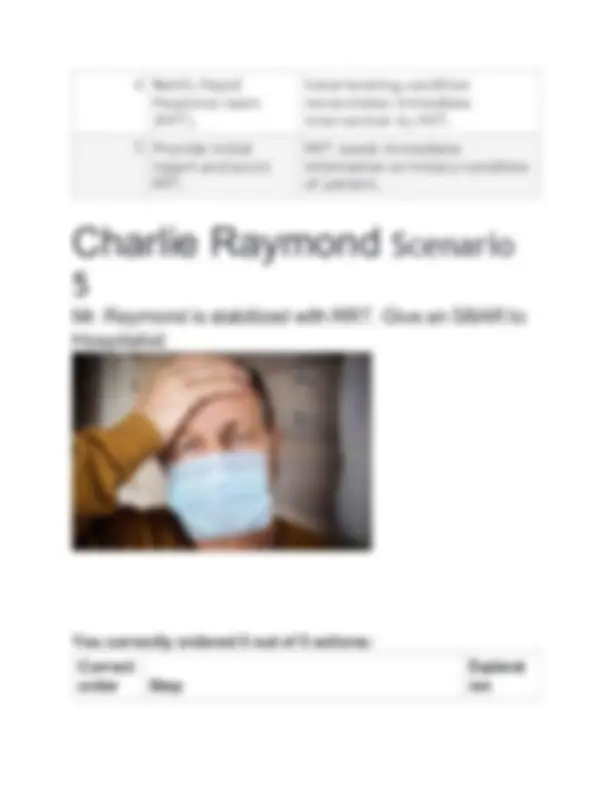
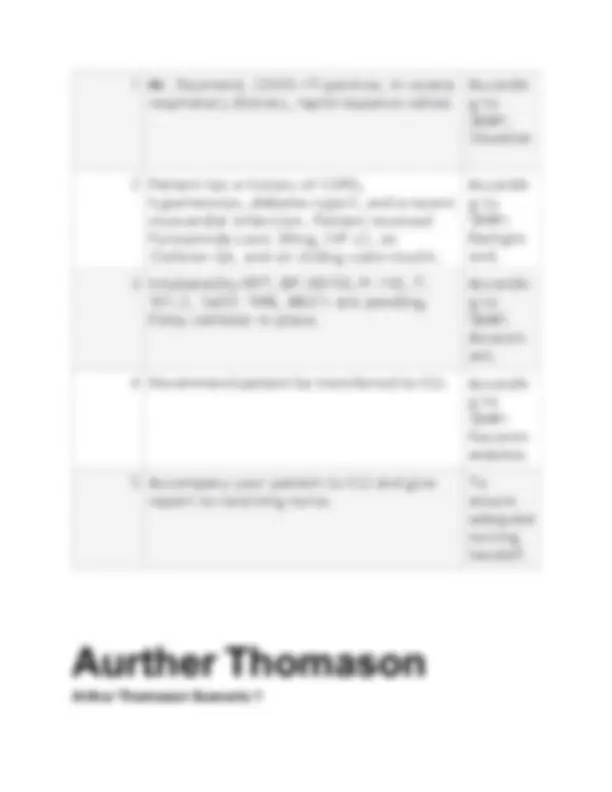
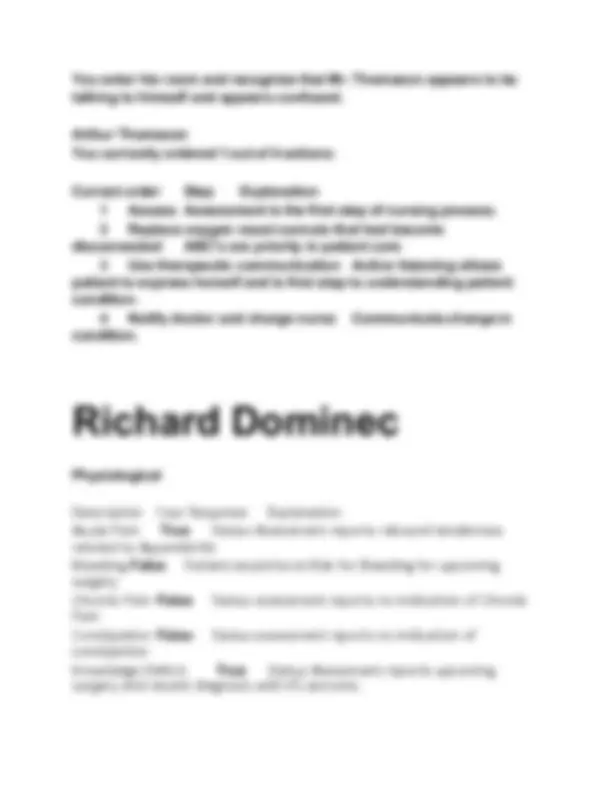
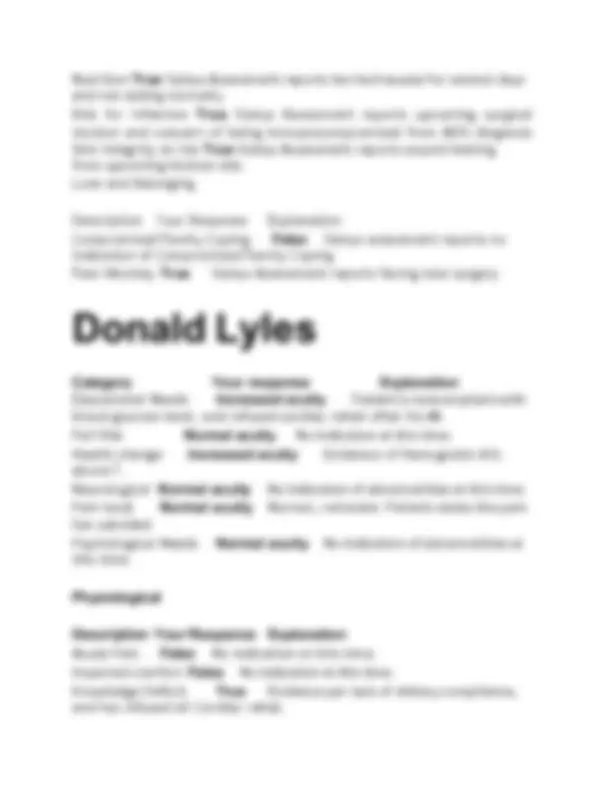
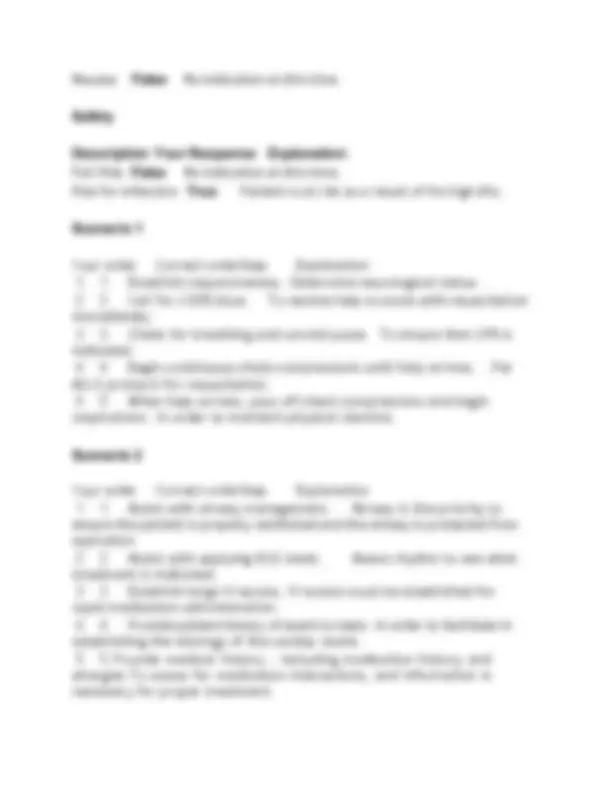
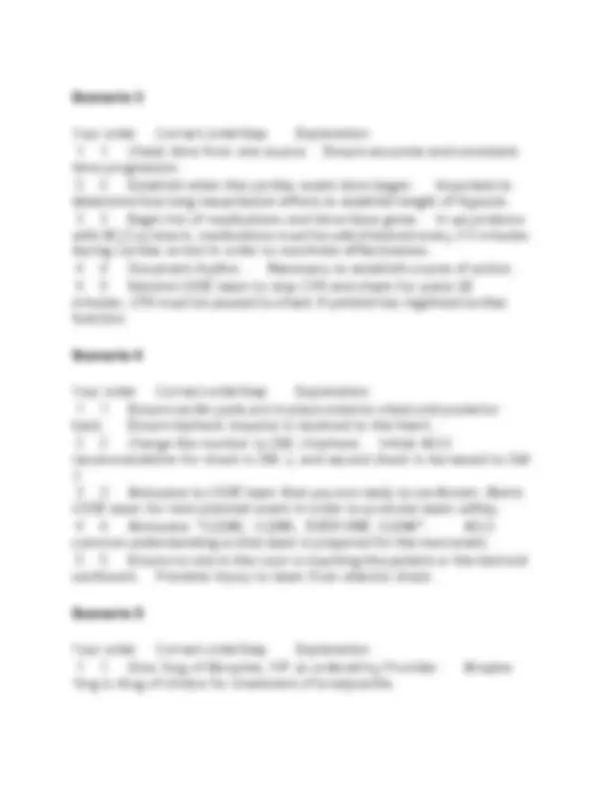
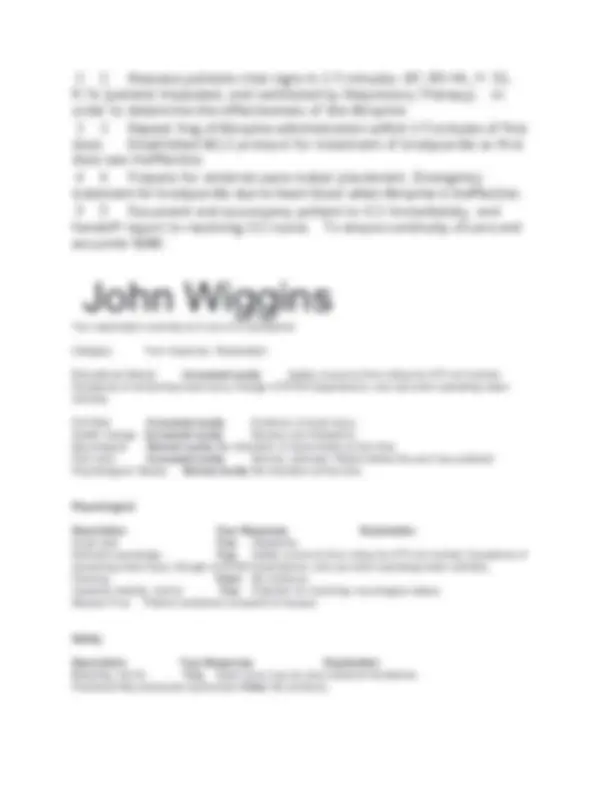

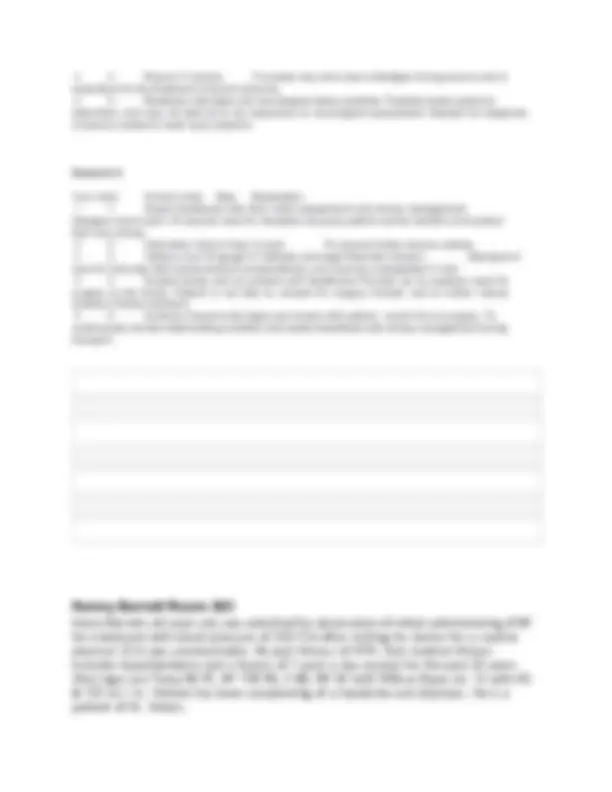
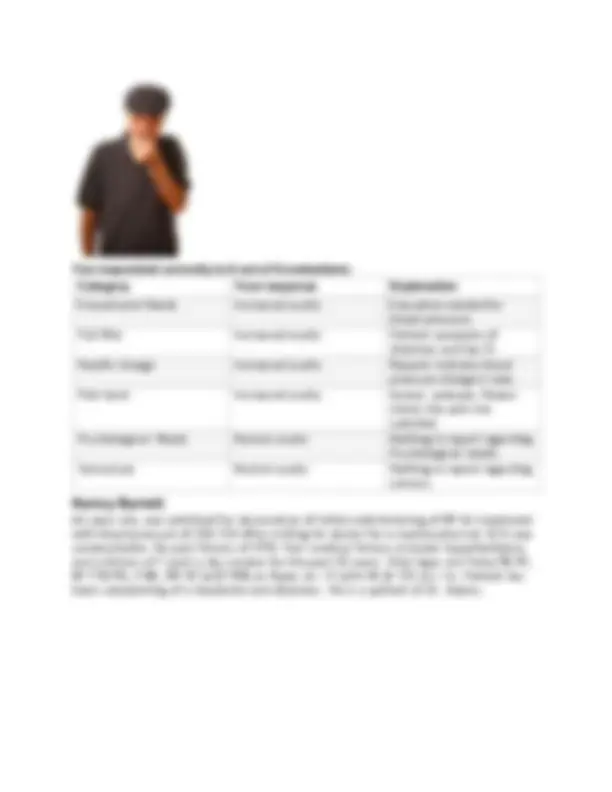
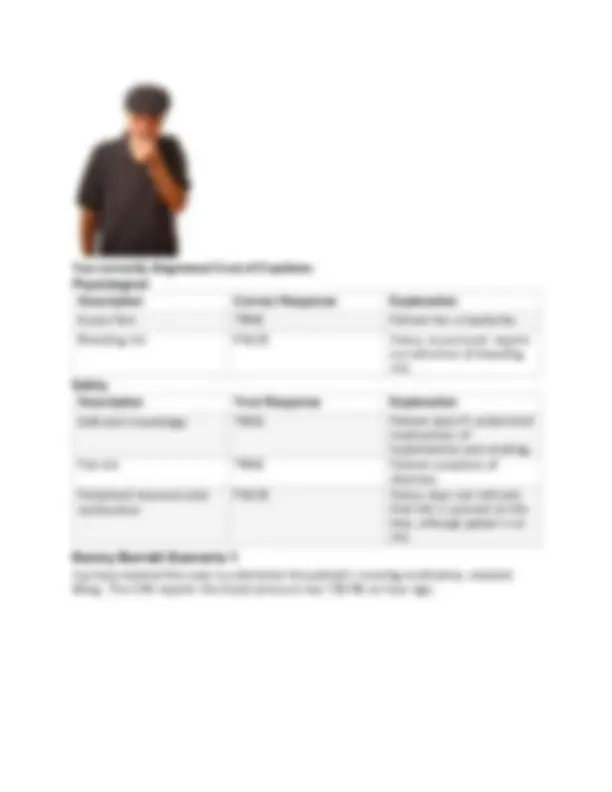
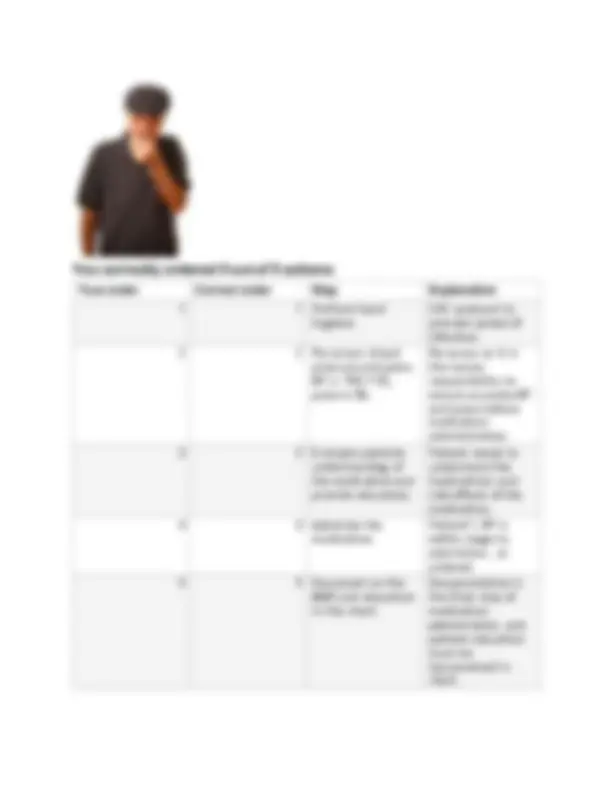
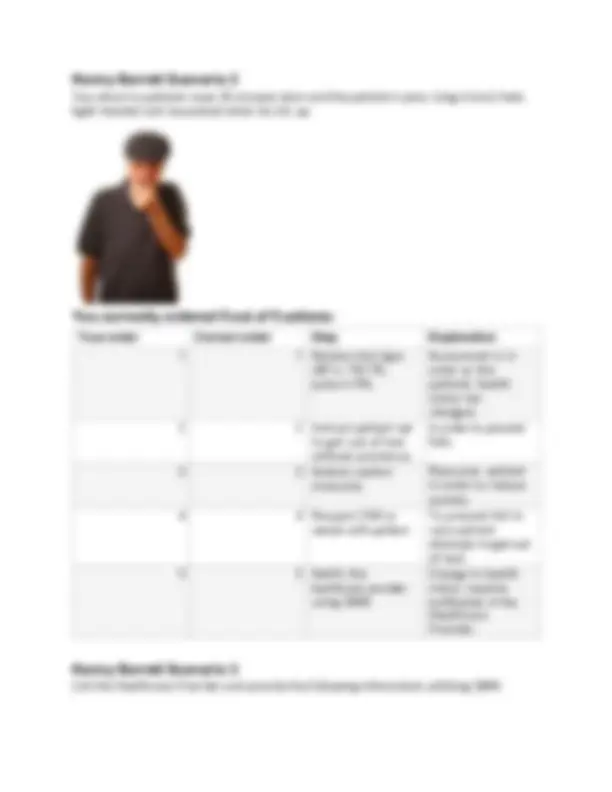
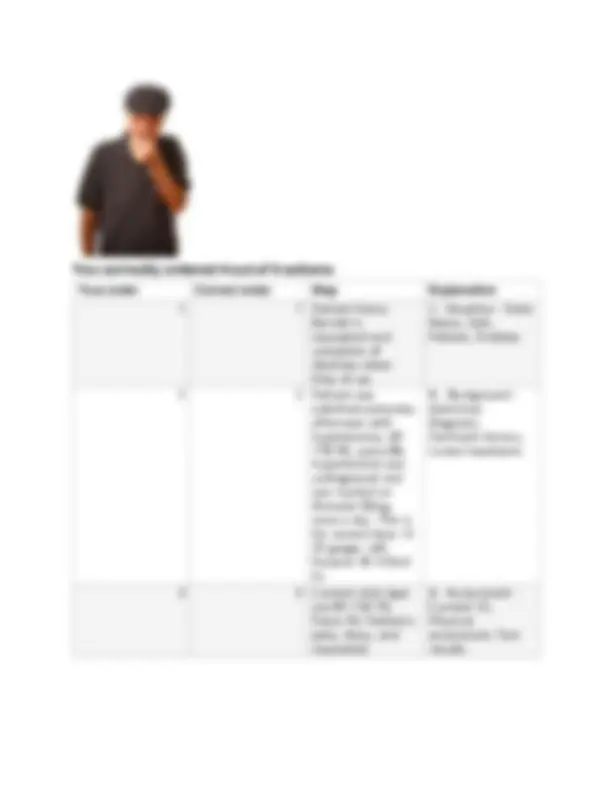
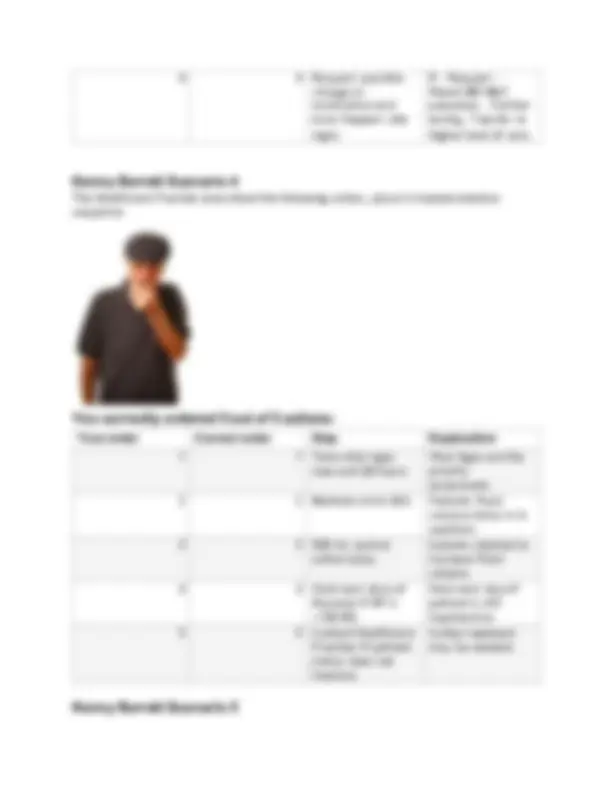
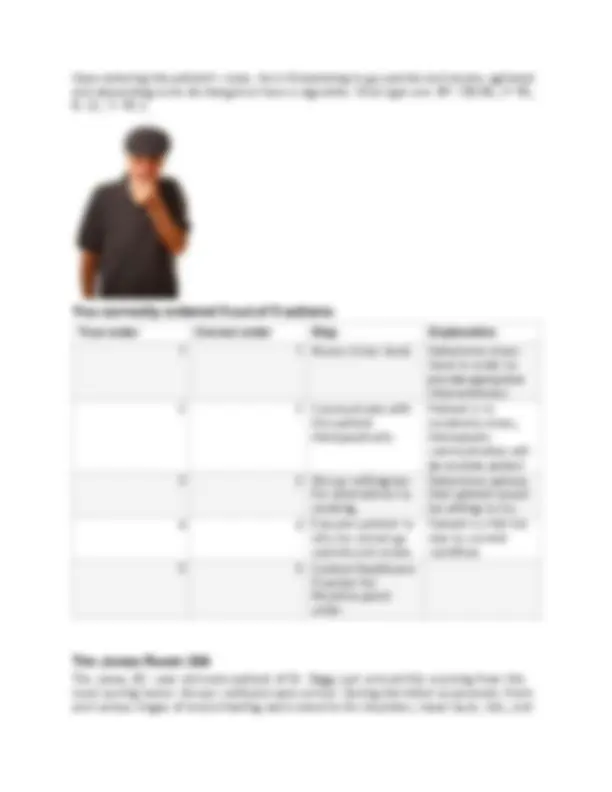
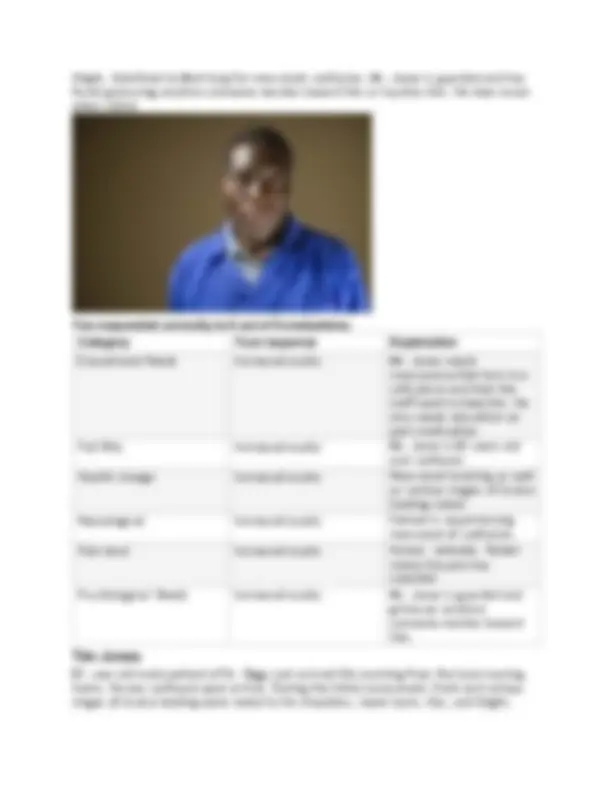
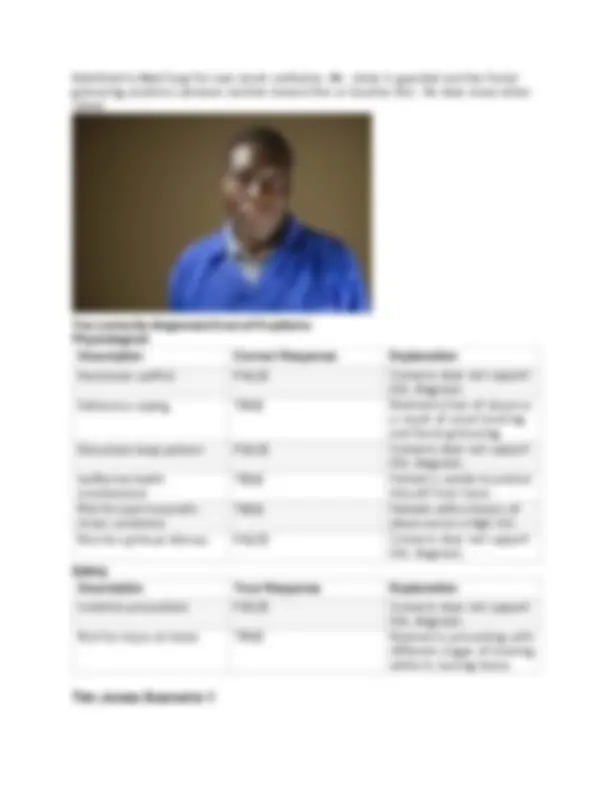
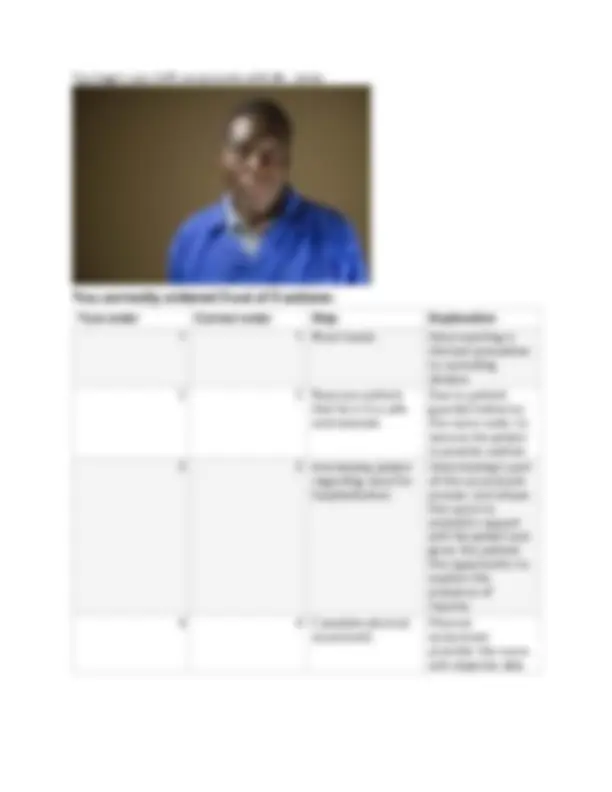
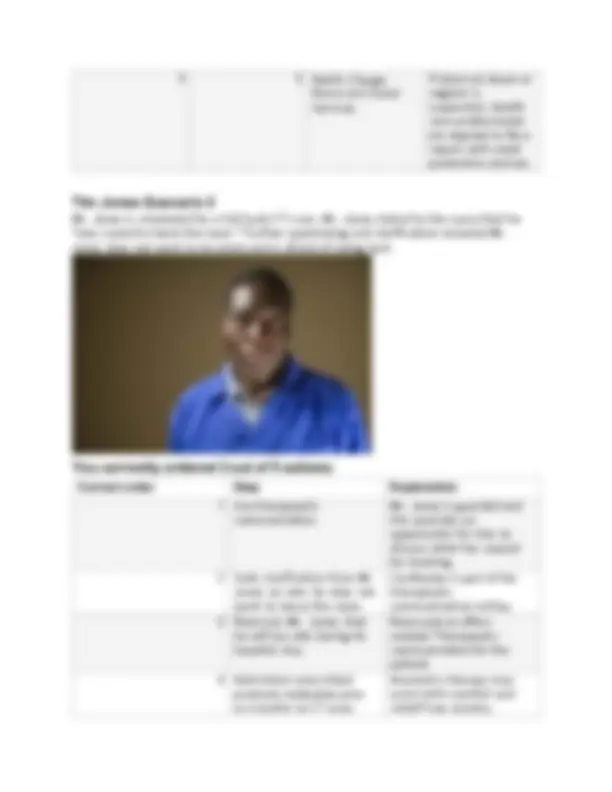
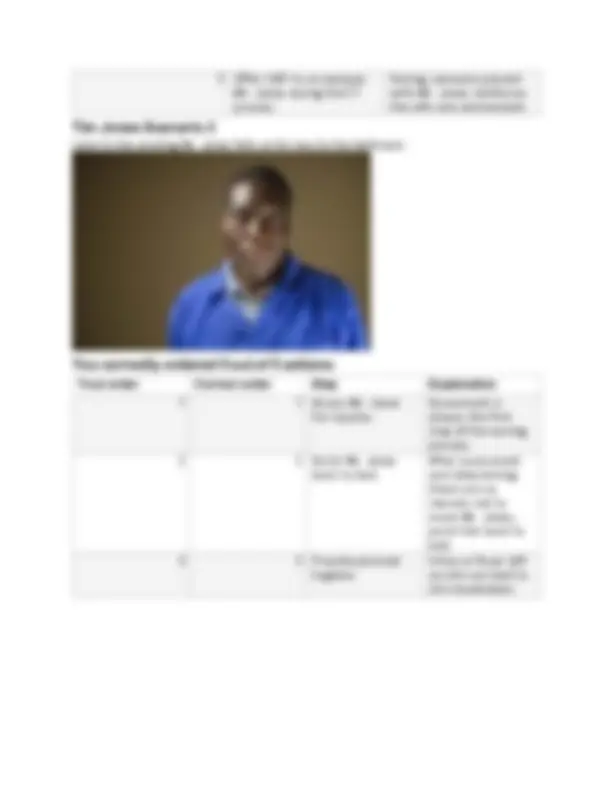
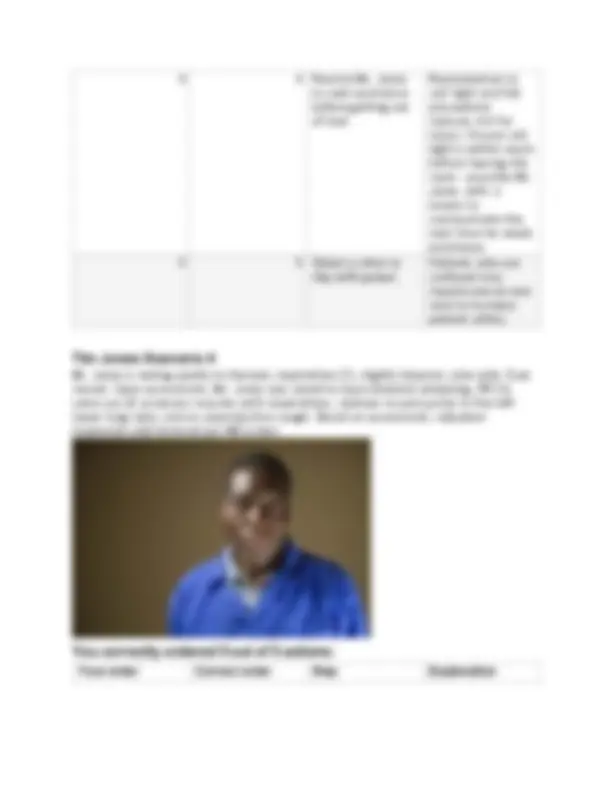
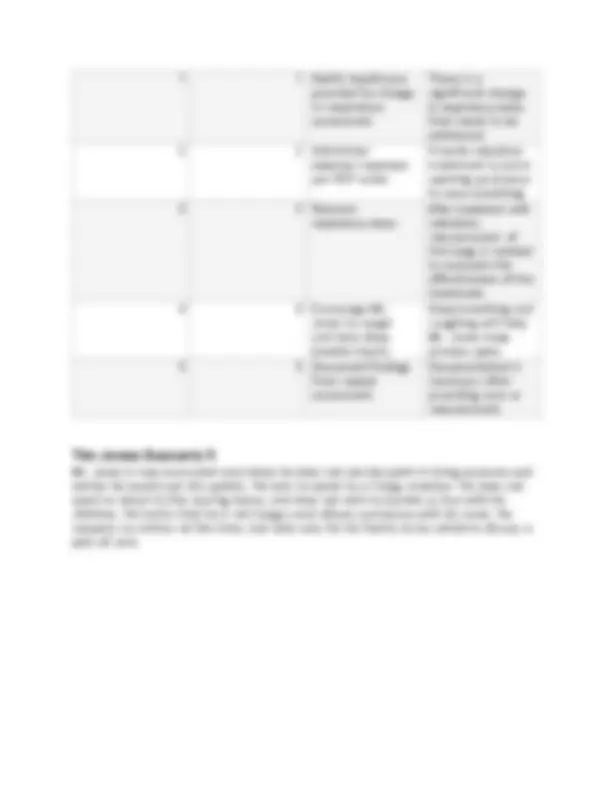
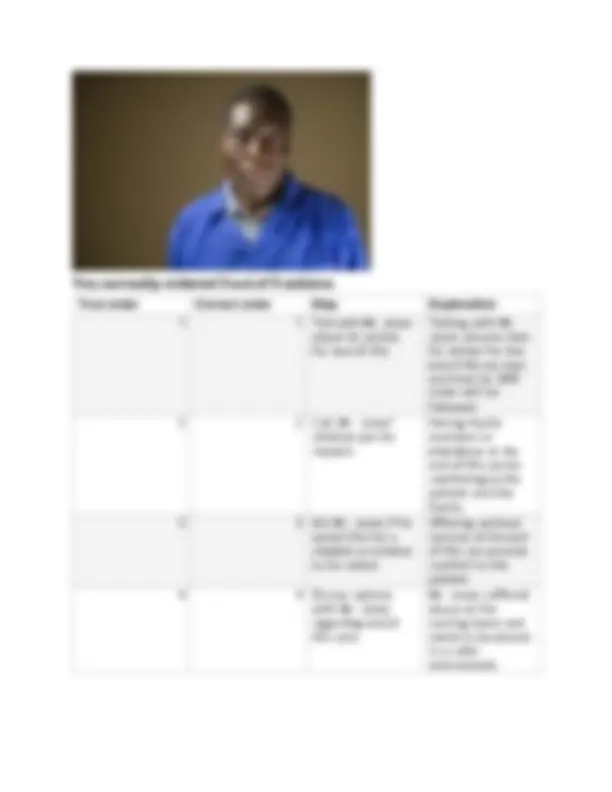
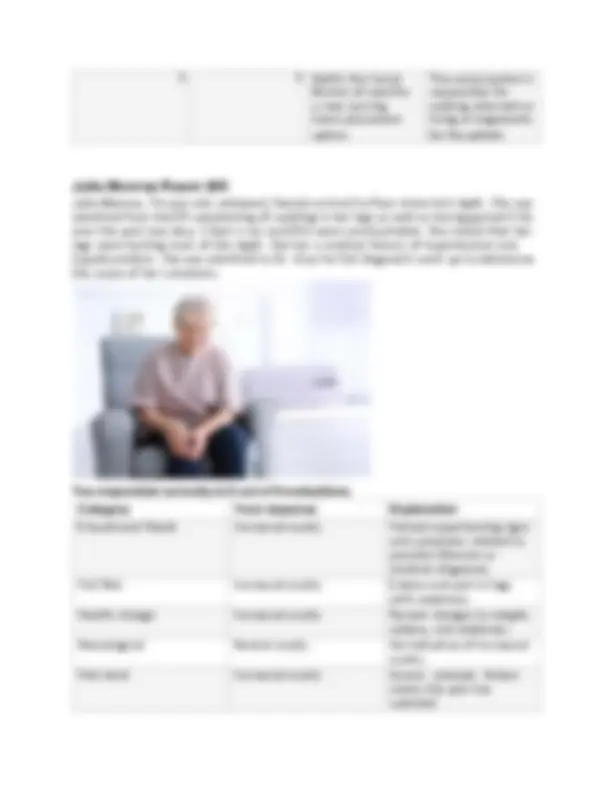
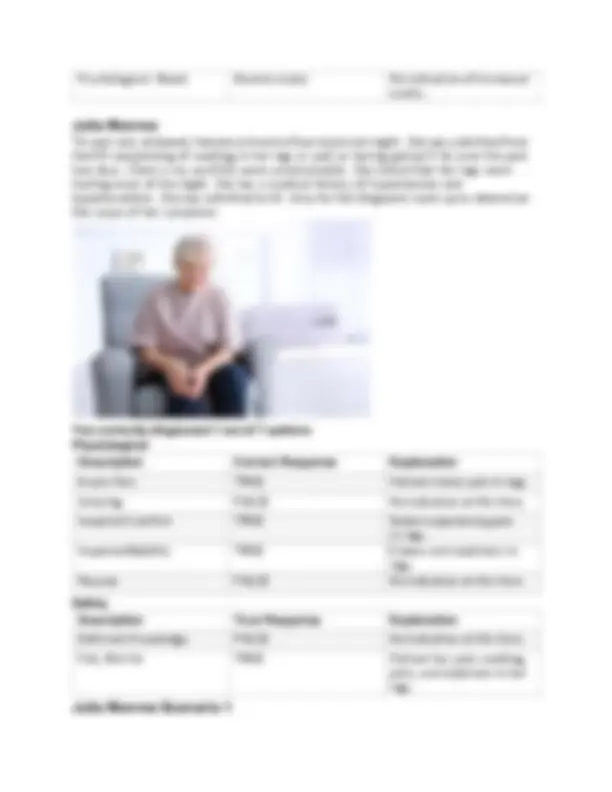
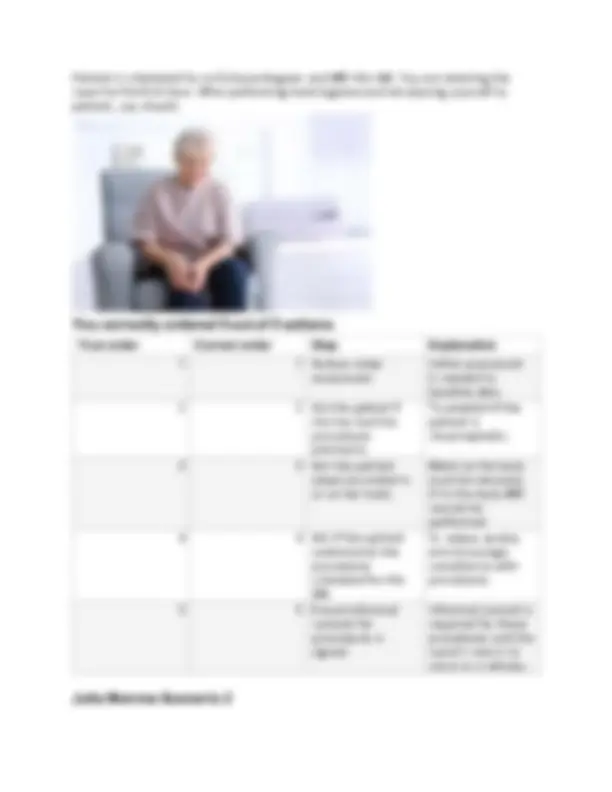
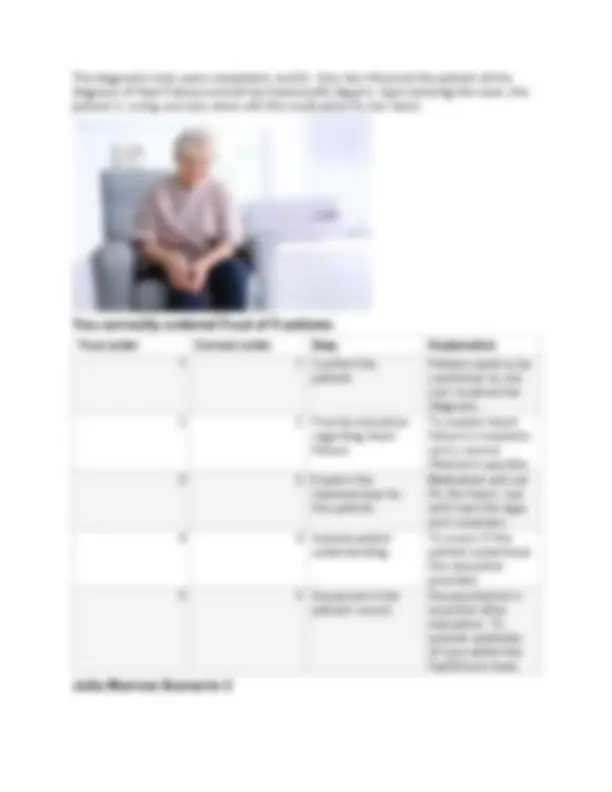
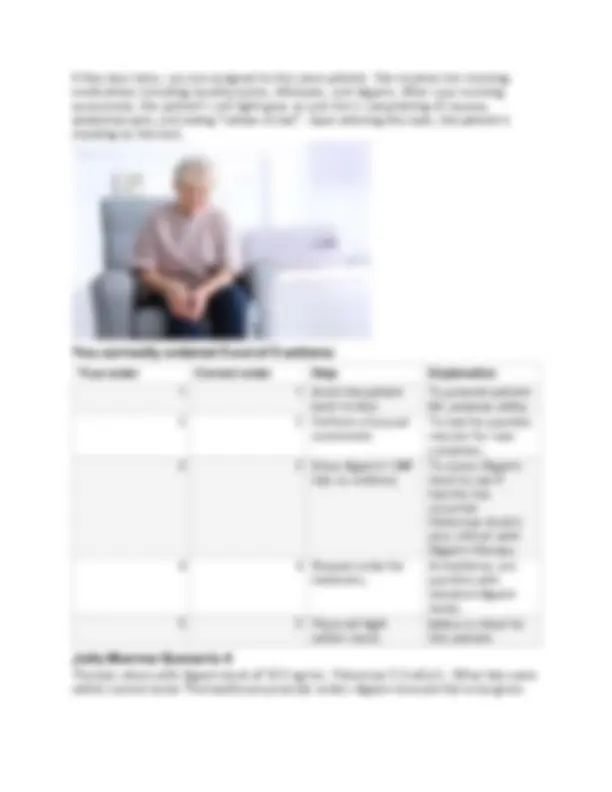
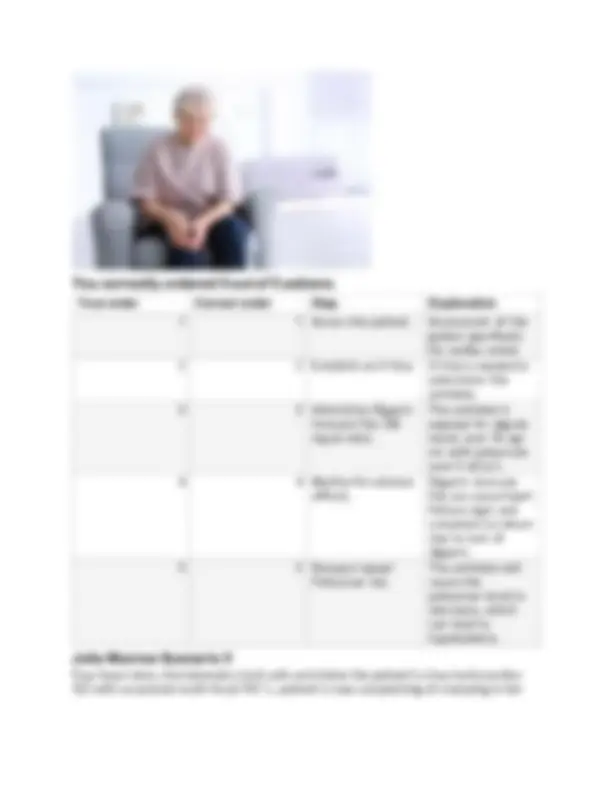
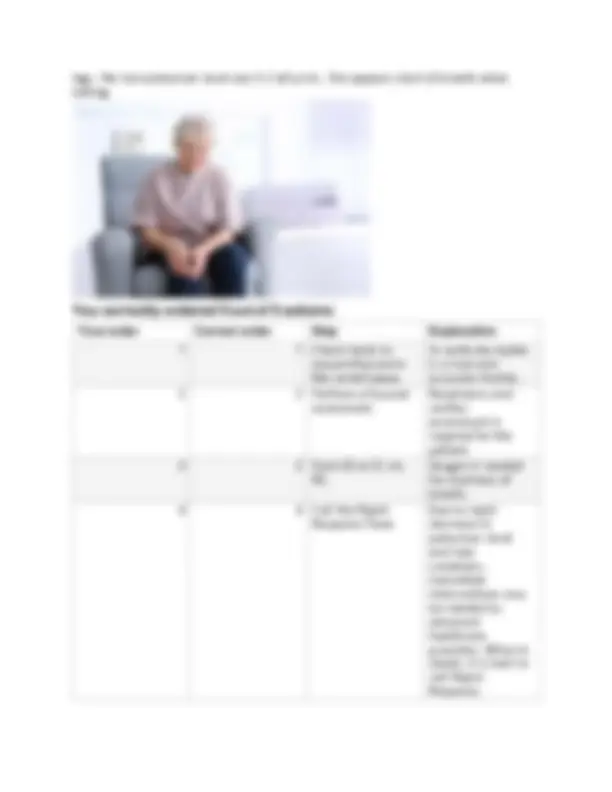
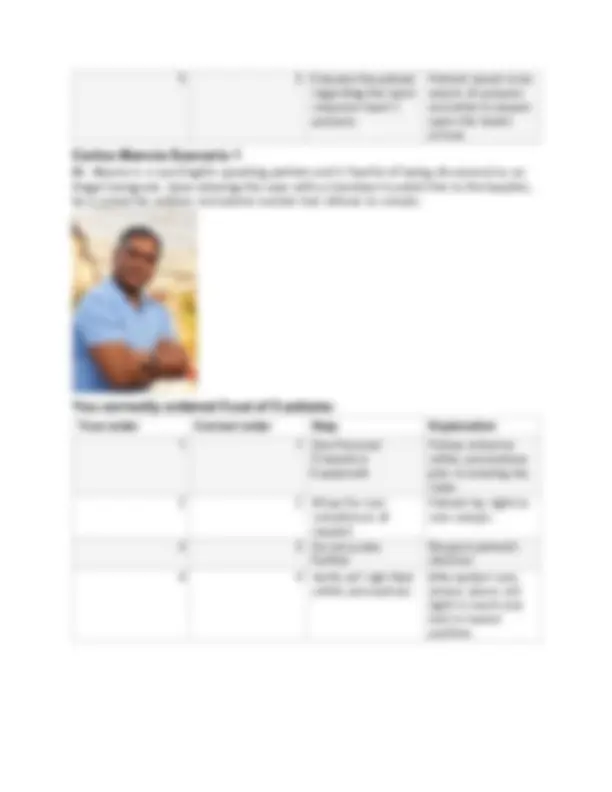


Study with the several resources on Docsity

Earn points by helping other students or get them with a premium plan


Prepare for your exams
Study with the several resources on Docsity

Earn points to download
Earn points by helping other students or get them with a premium plan
Community
Ask the community for help and clear up your study doubts
Discover the best universities in your country according to Docsity users
Free resources
Download our free guides on studying techniques, anxiety management strategies, and thesis advice from Docsity tutors
Several patient care scenarios that cover a range of medical conditions and nursing interventions. The scenarios cover topics such as pain management, fall risk assessment, nutrition, mobility, psychological needs, and patient education. Detailed information about the patient's status, vital signs, and nursing actions required to address the patient's needs. The scenarios offer valuable insights into the decision-making process and the critical thinking skills required for effective patient care. By analyzing these scenarios, healthcare professionals can enhance their understanding of patient-centered care, improve their clinical judgment, and develop strategies to provide high-quality, evidence-based nursing interventions.
Typology: Exams
1 / 131

This page cannot be seen from the preview
Don't miss anything!





























































































****New Patients from 2020, Post- Covid- 19 Update:** Charlie Raymond , John Duncan, Carlos Mancia, kenny barrett, Tim Jones, Julia Monroe, Donald Lyles, John Wiggins, Richard Dominec, Preston Wright, Tom Richardson, Joyce Workman, Karen Cole, Jose Martinez, Mary Barkley Charlie Raymond (for older swift river patients see other pdf files loaded at the bottom of this file)
Preston Wright, 73 - year old male, patient of Dr. Greene, status post CVA 4 weeks ago. He has been readmitted for a red spot on his sacrum of 1 cm and a 2 cm blister on his right heel. IV fluids of D5 1/2 NS are infusing at 100 mL/hour to his right forearm. Mr. Wright is pleasant and cooperative, but needs to be reminded to avoid pressure on his heel and sacrum. He has orders for dressing changes q daily, and pain medications prior to the dressing change.
You responded correctly to 6 out of 6 evaluations:
Impaired Physical Mobility TRUE Related to wound location. Impaired Tissue Integrity TRUE (^) Due to altered circulation and altered physical mobility. Ineffective Airway Clearance FALSE Patient has no evidence of breathing problems. Ineffective Breathing Pattern FALSE (^) Patient has no evidence of breathing problems. Risk for Imbalanced Nutrition FALSE Mr. Wright needs increased protein for healing of pressure injuries. Safety Description Your Respon se Explanation Isolation Precaution FALSE Patient is not in isolation. Risk for Infection TRUE Related to physical immobility, shearing forces, precautions at this time. Risk for Injury related to Falls FALSE (^) Scenario states patient is an increased fall risk.
You correctly ordered 5 out of 5 actions: Yo Co ur rre or ct de ord r er Step Explanation 1 1 Assess current pain level. Assessment is always the first step of the nursing process. 2 2 Assess documented pain level and intervention by previous nurses. Review nurses notes for previous pain assessment, intervention, and effectiveness/response for nurses action. 3 3 Review medication orders for pain. Reviewing orders to ensure proper medication is administered.
Yo Co ur rre or ct de ord r er (^) Step Explanation 1 1 Assess Mr. Wright’s willingness to learn. Assessment is always the first step in the nursing process. If Mr. Wright is unable/unwilling to learn currently, there is no need to move forward. 2 2 Eliminate as many distractions as possible. Elimination distractions promotes a beneficial learning environment. 3 3 Explain rationales for pressure relief to injured areas. Educates Mr. Wright about nursing interventions to allow for wound healing. (^4 4) Assess understandin g through teach back. Ensures validation of understanding by Mr. Wright. 5 5 Document responses. Documentation is necessary to validate education was provided and understood.
You correctly ordered 5 out of 5 actions: Y Co o rre ur ct or or d de er r Step Explanation 1 1 Remove old dressing with clean gloves daily. Removal of old dressing is a clean procedure because it is already contaminated. (^2 2) Assess the injury for presence of necrotic tissue and amount of exudate. Daily assessment of wounds is needed when the patient is in an acute-care setting. 3 3 Assess and document the condition of the skin surrounding the pressure injury in terms of color, temperature, texture, and moisture. Pressure injuries may have more tissue destruction than what is first seen upon inspection. Inspect undermine areas for gradual filling with healthy granulation tissue.
You correctly ordered 5 out of 5 actions: Y Co o rre ur ct or or d de er r Step Explanation 1 1 Don clean gloves and remove the old dressing. Clean gloves are used to remove the old dressing which is then placed in a red bag for disposal. (^2 2) Remove clean gloves, wash hands, put on sterile gloves. Clean gloves are removed, and hands must be washed prior to putting on sterile gloves. This is a sterile dressing change. 3 3 Clean wound with sterile saline, apply triple antibiotic ointment per HCP order. Wound is debrided with sterile saline so as not to introduce any further contaminants to the wound, Triple antibiotic ointment is needed to treat surface infection.
4 4 Place sterile moistened sterile gauze in wound, place ABD pad over wound. With a deep wound, lightly moistened sterile gauze is used to wick away drainage and promote healing, the ABD pad helps to hold the sterile gauze in place and protect the wound. (^5 5) Secure dressing in place with tape. The dressing should be secured in place with tape to keep the dressing from shifting and causing further damage to the tissue.
You correctly ordered 5 out of 5 actions:
Tom Richardson, 46yr-old. Dx- urinary stones with 3 episodes/ 5yrs. Allergic to sulfa drugs. Vital signs - Temp 98.4,BP 178/105, P 112, RR 28, SaO2 94%; Neuro- WNL's. Skin warm and pale. Generalized weakness, blood tinged urine and severe pain upon urination, GI- n/v. Clear liquid diet. Strict I&O and strain all urine, filters in bathroom. Patient demonstrates urine strain procedure. Severe pain (10/10) medicated q 30 minutes x4 with IV Morphine 2mg with little relief. IV D5 1/2 NS @150ml/hr. Dr. Small at bedside with patient and family. Stat lithotripsy treatment ordered. Awaiting transport. You responded correctly to 6 out of 6 evaluations: Categ ory Your respo nse Explanation Educati onal Needs Increa sed acuity Status assessment reports patient had clear liquid diet, Strict I&O, Strain urine, lithotripsy treatment ordered. Fall Risk Increa sed acuity Status assessment reports patient has generalized weakness, patient medicated q 30 min x4 with IV morphine 2mg with little relief. Health Chang e Increa sed acuity Status assessment reports patient has urinary stones, generalized weakness, GI- n/v, clear liquid diet, Strict I&O, severe pain, stat lithotripsy treatment ordered.
Pain Level Increa sed acuity Normal, rationale: Patient states the pain has subsided Psycho logical Needs Norma l acuity Status assessment reports no indication of increased psychological acuity. Sensori um Norma l acuity Status assessment reports no indication of increased sensorium acuity.
46yr-old. Dx- urinary stones with 3 episodes/5yrs. Allergic to sulfa drugs. Vital signs - Temp 98.4,BP 178/105, P 112, RR 28, SaO2 94%; Neuro- WNL's. Skin warm and pale. Generalized weakness, blood tinged urine and severe pain upon urination, GI- n/v. Clear liquid diet. Strict I&O and strain all urine, filters in bathroom. Patient demonstrates urine strain procedure. Severe pain (10/10) medicated q 30 minutes x4 with IV Morphine 2mg with little relief. IV D5 1/2 NS @150ml/hr. Dr. Small at bedside with patient and family. Stat lithotripsy treatment ordered. Awaiting transport. You correctly diagnosed 7 out of 8 options: Physiological
You correctly ordered 5 out of 5 actions: You r ord er Corr ect order (^) Step Explanation 1 1 Wash and glove hands First step in patient assessment/ intervention. (^2 2) Vital assessmen t Always perform vital assessment before pain meds are given. 3 3 Administer pain medication s Assessment, Planning, Intervention, Evaluation (APIE). 4 4 Re-assess patient APIE. Patient VS/condition could change as of a result of medication.
(^5 5) Document results Accurate documentation is to be performed after patient care is performed, NEVER BEFORE!
You correctly ordered 4 out of 4 actions: Your orde r Corre ct order (^) Step Explanation 1 1 Vital assessment Always perform vital assessment before pain medications are given. (^2 2) Notify doctor for pain medications DR can write stronger pain medication to subdue symptoms. 3 3 Administer new pain medications Related to prior medication being ineffective.
(^5 5) Document results and findings Accurate documentation is to be performed after patient care is performed, NEVER BEFORE!
You correctly ordered 5 out of 5 actions: Yo ur ord Corr ect orde er r Step Explanation 1 1 Use therapeutic communication/ Active Listening Assessment using Therapeutic Communication. 2 2 Educate patient Education is to be achieved after understanding patient condition. 3 3 Evaluate understanding Evaluation can be achieved after patient education. 4 4 Contact dietary consult Proper diet can facilitate renal stone prevention.
5 5 Document results Accurate documentation is to be performed after patient care is performed, NEVER BEFORE!
You correctly ordered 5 out of 5 actions: You r ord er Corre ct order Step Explanation 1 1 Discharge instructio ns Important follow-up information to continued treatment. (^2 2) Evaluate understan ding Evaluate Understanding - Evaluation can be achieved after patient education. 3 3 Escort patient to vehicle Patient safety is a concern.